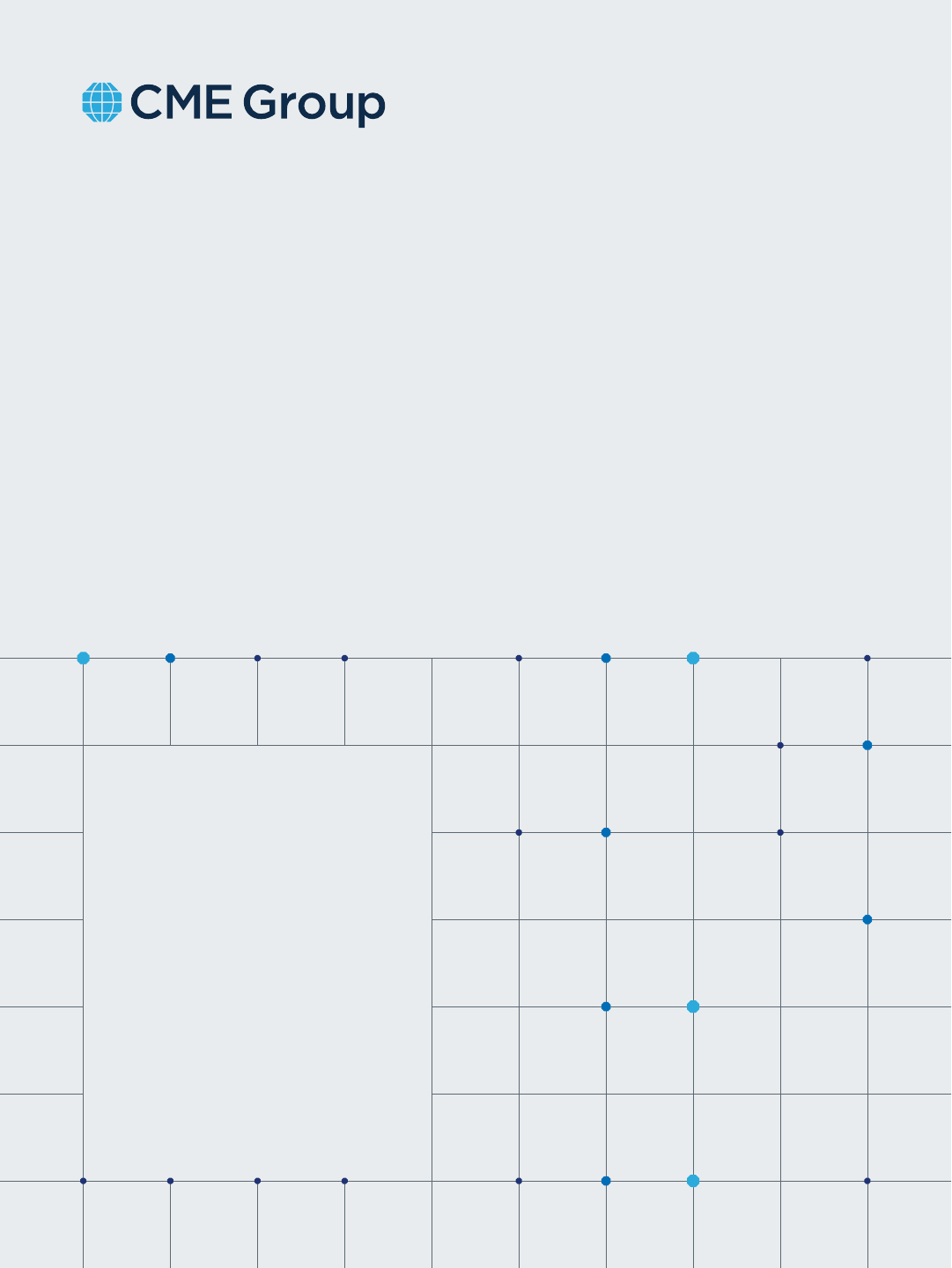
Understanding Treasury Futures
Table of Contents
Treasury Cash Market Basics
Coupon-Bearing Treasury Securities ...............................................................1
Price/Yield Relationship .........................................................................1
Quotation Practices ............................................................................2
Accrued Interest and Settlement Practices ..........................................................2
Treasury Auction Cycle .........................................................................3
The “Run” . . . . . . . . . . . . . . . . . . . . . . . . . . . . . . . . . . . . . . . . . . . . . . . . . . . . . . . . . . . . . . . . . . . . . . . . . . . . . . . . . . . . 3
The Roll and Liquidity ...........................................................................4
Repo Financing ...............................................................................4
Treasury Cash & Futures Relationships
Treasury Futures Delivery Practices ...............................................................5
Conversion Factor Invoicing System ................................................................5
Cheapest-to-Deliver ............................................................................6
The Basis . . . . . . . . . . . . . . . . . . . . . . . . . . . . . . . . . . . . . . . . . . . . . . . . . . . . . . . . . . . . . . . . . . . . . . . . . . . . . . . . . . . . 6
Why Is One Issue CTD? .........................................................................8
Conversion Factor Eects ........................................................................8
Implied Repo Rate .............................................................................9
Basis Optionality ..............................................................................10
Hedging with Treasury Futures
Measuring Risk . . . . . . . . . . . . . . . . . . . . . . . . . . . . . . . . . . . . . . . . . . . . . . . . . . . . . . . . . . . . . . . . . . . . . . . . . . . . . . . 11
Basis Point Value (BPV) ........................................................................11
Duration . . . . . . . . . . . . . . . . . . . . . . . . . . . . . . . . . . . . . . . . . . . . . . . . . . . . . . . . . . . . . . . . . . . . . . . . . . . . . . . . . . . . 12
Risk Management . . . . . . . . . . . . . . . . . . . . . . . . . . . . . . . . . . . . . . . . . . . . . . . . . . . . . . . . . . . . . . . . . . . . . . . . . . . . . 12
CF Weighted Hedge ...........................................................................12
BPV Weighted Hedge . . . . . . . . . . . . . . . . . . . . . . . . . . . . . . . . . . . . . . . . . . . . . . . . . . . . . . . . . . . . . . . . . . . . . . . . . . 13
Crossover Risks ..............................................................................14
Portfolio Hedging .............................................................................15
Bullets and Barbells ...........................................................................16
Comparing Returns of Cash to Futures & Repo
The Delivery Timetable for Treasury Futures ........................................................18
Treasury Futures Contracts Summary .............................................................19
December 2017 Ten-Year T-Note Futures Basis .....................................................20
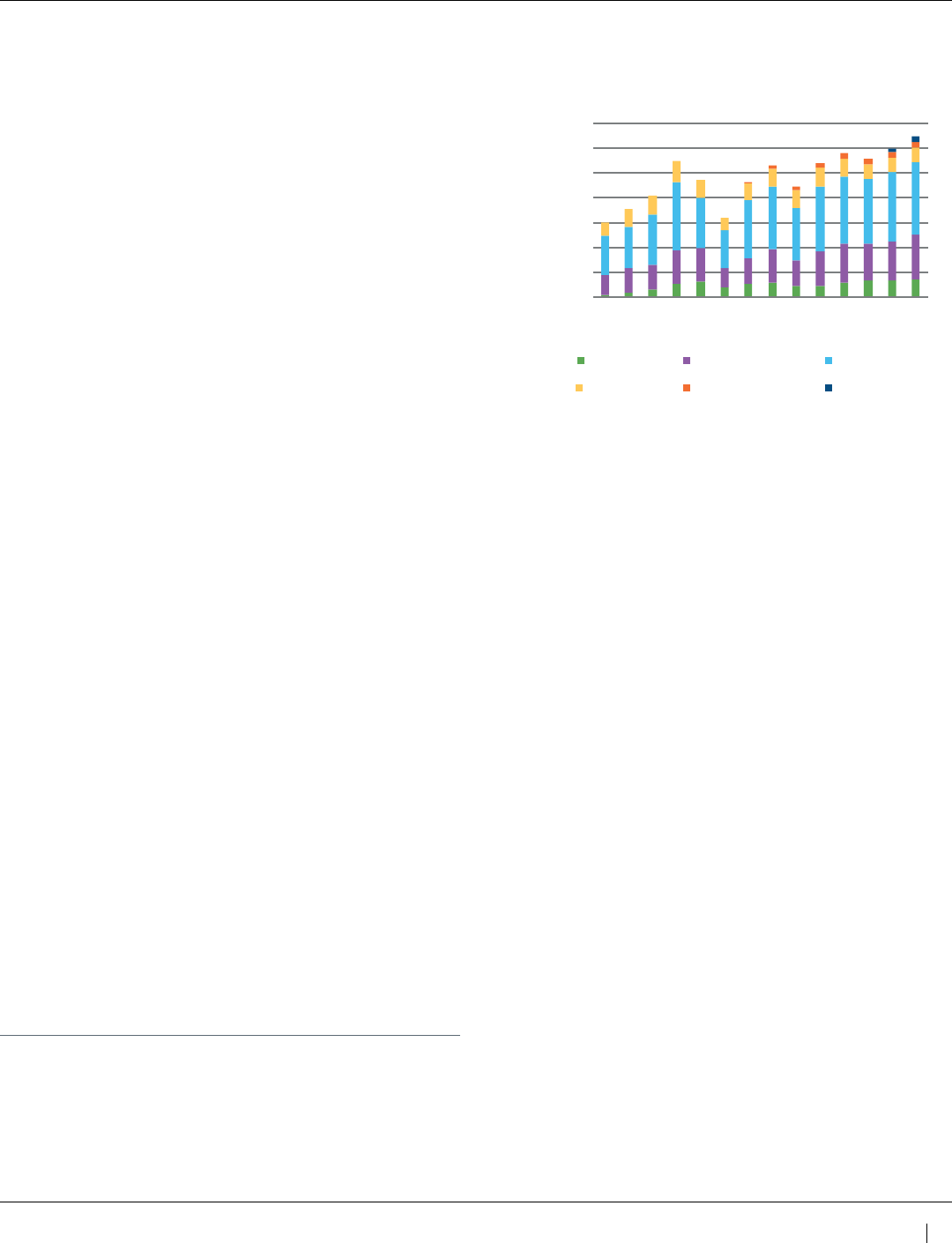
Understanding Treasury Futures
© 2024 CME Group. All rights reserved.
1
Treasury Bond futures were introduced on the Chicago
Board of Trade in 1977. The Treasury futures product line
has been augmented over the years by the introduction of
Ultra 10-year, 10-year, 5-year, 2-year Treasury note and
Ultra Treasury bond futures.
1
This product line has experienced tremendous success
as the scale and global signicance of U.S. Treasury
investment has grown over the years. Today, these
products are utilized on an international basis by
institutional and individual investors for purposes of both
abating and assuming risk exposures.
This document is intended to provide an overview of the
fundamentals of trading U.S. Treasury bond and note
futures. We assume only a cursory knowledge of coupon-
bearing Treasury securities. Thus, we begin with a primer
on the operation of cash Treasury markets before moving
on to provide some detail regarding the features of the
U.S. Treasury futures contracts as well as a discussion of
risk management applications with U.S. Treasury futures.
Coupon-Bearing Treasury Securities
U.S. Treasury bonds and notes represent a loan to the
U.S. government. Bondholders are creditors rather than
equity- or share-holders. The U.S. government agrees to
repay the face or principal or par amount of the security
at maturity, plus coupon interest at semi-annual intervals.
Treasury securities are often considered “riskless”
investments given that the “full faith and credit” of the U.S.
government backs these securities.
The security buyer can either hold the bond or note until
maturity, at which time the face value becomes due; or,
the bond or note may be sold in the secondary markets
prior to maturity. In the latter case, the investor recovers
the market value of the bond or note, which may be more
or less than its face value, depending upon prevailing
yields. In the meantime, the investor receives semi-annual
coupon payments every six months.
1 U.S. Treasury Note and Bond Futures are listed for trading on and subject to the rules and
regulations of the Board of Trade of the City of Chicago, Inc. (CBOT). CBOT lists futures
on Treasury securities covering a broad set of maturities, including the benchmark 10-Year
Treasury Note futures. CME Group is the parent of four U.S. based futures exchanges that are
registered under the Commodity Exchange Act (“CEA”) with the CFTC as designated contract
markets (“DCMs”): Chicago Mercantile Exchange (“CME”), the Board of Trade of the City of
Chicago, Inc. (“CBOT”), New York Mercantile Exchange, Inc. and Commodity Exchange, Inc.
(collectively, the “CME Group Exchanges” or “Exchanges”).
Treasury Futures Avg Daily Volume
2004
2005
2006
2007
2008
2009
2010
2011
2012
2013
2014
2015
2016
2017
2-Year (TU) 5-Year (FV) 10-Year (TY)
T-Bond (US) Ultra T-Bond (UB) Ultra-10 (TN)
0
500,000
1,000,000
1,500,000
2,000,000
2,500,000
3,000,000
3,500,000
E.g., you purchase $1 million face value of the 2-1/4% note
maturing in August 2027. This security pays half its stated
coupon or 1-1/8% of par on each six-month anniversary of
its issue. Thus, you receive $22,500 (= 2-1/4% of $1 million)
annually, paid out in semi-annual installments of $11,250 in
February and August. Upon maturity in August 2027, the $1
million face value is re-paid and the note expires.
Price/Yield Relationship
A key factor governing the performance of bonds in the
market is the relationship of yield and price movement. In
general, as yields increase, bond prices will decline; as
yields decline, prices rise. In a rising rate environment,
bondholders will witness their principal value erode; in a
decline rate environment, the market value of their bonds
will increase.
IF Yields Rise THEN Prices Fall
IF Yields Fall THEN Prices Rise
This inverse relationship may be understood when one
looks at the marketplace as a true auction. Assume an
investor purchases a 10-year note with a 2% coupon when
yields are at 2%. Thus, the investor pays 100% of the face
or par value of the security. Subsequently, rates rise to
3%. The investor decides to sell the original note with the
2% yield, but no one will pay par as notes are now quoted
at 3%. Now he must sell the note at a discount to par in
order to move the note. I.e., rising rates are accompanied
by declining prices.

2
Falling rates produce the reverse situation. If rates fall to
1%, our investment yields more than market rates. Now
the seller can oer it at a premium to par. Thus, declining
rates are accompanied by rising prices. Should you hold
the note until maturity, you would receive the par or face
value. In the meantime, of course, one receives semi-
annual coupon payments.
Quotation Practices
Unlike money market instruments (including bills and
Eurodollars) that are quoted on a yield basis in the cash
market; coupon-bearing securities are frequently quoted in
percent of par to the nearest 1/32nd of 1% of par.
E.g., one may quote a bond or note at 97-18. This equates
to a value of 97% of par plus 18/32nds. The decimal
equivalent of this value is 97.5625. Thus, a one million-
dollar face value security might be priced at $975,625. If the
price moves by 1/32nd from 97-18 to 97-19, this equates to
a movement of $312.50 (per million-dollar face value).
But often, these securities, particularly those of shorter
maturities, are quoted in ner increments than 1/32nd. For
example, one may quote the security to the nearest 1/64th.
If the value of our bond or note in the example above were
to increase from 97-18/32nds by 1/64th, it may be quoted
at 97-18+. The trailing “+” may be interpreted as +1/64th.
Or, you may quote to the nearest 1/128th. If our note
were to increase from 97-18/32nds by 1/128th, it might be
quoted on a cash screen as 97-182. The trailing “2” may
be read as +2/8ths of 1/32nd; or, 1/128th. If the security
rallies from 97-18/32nds by 3/128ths, it may be quoted
as 97-186. The trailing “6” may be read as +6/8ths of
1/32nd or 3/128ths. Sometimes, quotation systems use
an alternate fractional reference. E.g., the value of 97-
182 might be displayed as 97-18¼. Or a value of 97-18+
might be displayed as 97-18½. A value of 97-186 might be
displayed as 97-18¾.
Futures quotation practices are similar but not entirely
identical. A quote of 97-182 is the same no matter whether
you are looking at a cash or a futures quote. It means 97%
of par plus 18/32nds plus 1/128th.
Quotation Practices
Cash Price Means
Decimal Equivalent
(% of Par)
Futures
Quote
97-18 97-18/32nds 97.5625000 97-18
97-182 or 97-18¼ 97-18/32nds +
1/128th
97. 5703125 97-182
97-18+ or 97-18½
97-18/32nds +
1/64th
97. 578125 0 97-185
97-186 or 97-18¾ 97-18/32nds +
3/128ths
97. 5 859375 97-187
But in the case of the cash markets, that trailing “2” means
2/8ths of 1/32nd = 1/128th. In the case of the futures
markets that trailing “2” represents the truncated value of
0.25 x 1/32nd or 1/128th. A quote of 97-18+ in the cash
markets is equivalent to 97-185 in the futures market. That
trailing “5” represents 0.5 x 1/32nd or 1/64th. A quote of
97-186 in the cash markets is equivalent to 97-187 in the
futures market. The trailing “7” represents the truncated
value of 0.75 x 1/32nd = 3/128ths.
The normal commercial “round-lot” in the cash markets is
$1 million face value. Anything less might be considered
an “odd-lot.” However, you can purchase Treasuries in
units as small as $1,000 face value. Of course, a dealer’s
inclination to quote competitive prices may dissipate as
size diminishes. Ultra Treasury bond, Treasury bond,
Ultra 10-year, 10-year and 5-year Treasury note futures,
however, are traded in units of $100,000 face value.
3-year and 2-year Treasury note futures are traded in units
of $200,000 face value.
Accrued Interest and Settlement Practices
In addition to paying the (negotiated) price of the coupon-
bearing security, the buyer also typically compensates
the seller for any interest accrued between the last semi-
annual coupon payment date and the settlement date of
the security.
E.g., it is October 10, 2017. You purchase $1 million face
value of the 2-1/4% Treasury security maturing in August 2027
(a ten-year note) for a price of 99-01 ($990,312.50) to yield
2.36%, for settlement on the next day, October 11, 2017.
In addition to the price of the security, you must further
compensate the seller for interest of $3,485.05 accrued
during the 57 days between the original issue date of August
15, 2017 and the settlement date of October 11, 2017.
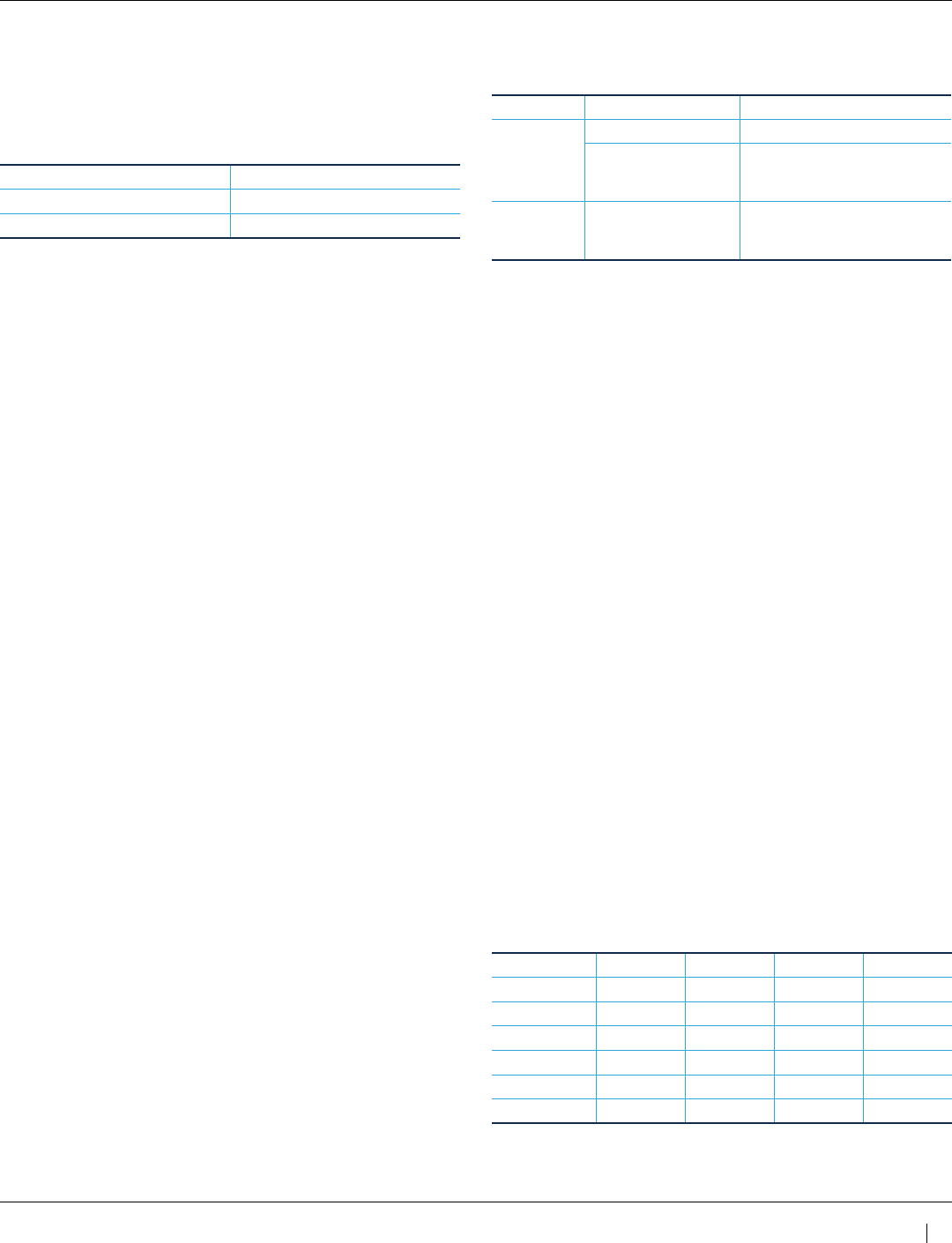
Understanding Treasury Futures
© 2024 CME Group. All rights reserved.
3
This interest is calculated relative to the 57 days between
issue date of August 15, 2017 and the next coupon
payment date of February 15, 2018 or $3,485.05
[= (57/184) x ($22,500/2)]. The total purchase price
is $993,797.55.
Price of Note $990,312.50
Accrued Interest $3,485.05
Total $9 9 3 ,797.5 5
Typically, securities are transferred through the Fed wire
system from the bank account of the seller to that of the
buyer vs. cash payment. That transaction is concluded
on the settlement date which may be dierent from the
transaction date.
Unlike the futures market where trades are settled on the
same day they are transacted, it is customary to settle a
cash transaction on the business day subsequent to the
actual transaction. Thus, if you purchase the security on a
Thursday, you typically settle it on Friday. If purchased on
a Friday, settlement will generally be concluded on the
following Monday.
Sometimes, however, a “skip date” settlement is specied.
E.g., one may purchase a security on Monday for skip
date settlement on Wednesday. Or, “skip-skip date”
settlement on Thursday; “skip-skip-skip date” settlement
on the Friday, etc. Skip or forward date settlements may
be useful in order to match Treasury transaction payments
with one’s anticipated future cash ows at current market
prices. Theoretically, there is no eective limitation on the
number of days over which one may defer settlement.
Thus, these cash securities may eectively be traded as
forward contracts.
Treasury Auction Cycle
Treasury securities are auctioned on a regular basis by
the U.S. Treasury which accepts bids on a yield basis
from security dealers. A certain amount of each auction is
set aside, to be placed on a non-competitive basis at the
average yield lled.
Prior to the actual issuance of specic Treasuries,
they may be bought or sold on a “WI” or “When Issued”
basis. When traded on a WI basis, bids and oers are
quoted as a yield rather than as a price in anticipation of
the establishment of the coupon subsequent to the
original auction.
U.S. Treasury Auction Schedule
Fixed-Principal, Fixed-Coupon Notes and Bonds
Maturity Auctioned
Treasury
Notes
2-, 3-, 5- and 7-Year Monthly
10 -Year February, May, August &
November with re-openings in
other 8 months
Treasury
Bonds
30 -Year February, May, August &
November with re-openings in
other 8 months
Security dealers purchase these recently auctioned
securities and subsequently market them to their
customers including pension funds, insurance companies,
banks, corporations and retail investors. The most recently
issued securities of a particular maturity are referred to
as “on-the-run” securities. On-the-runs are typically the
most liquid and actively traded of Treasury securities and,
therefore, are often referenced as pricing benchmarks.
Less recently issued securities are known as “o-the-run”
securities and tend to be less liquid.
The Treasury currently issues 4-week, 13-week, 26-week
and 52-week bills; 2-year, 3-year, 5-year, 7-year and
10-year notes; 2-year Floating Rate Notes (FRNs); and,
30-year bonds on a regular schedule. In the past, the
Treasury had also issued securities with a 4-year and 20-
year maturity. Further, the Treasury may issue very short
term cash management bills along with Treasury Ination
Protected Securities or “TIPS.”
The “Run”
If you were to ask a cash dealer for a quotation of “the
run,” he would quote yields associated with the on-the-
run securities from the current on-the-run Treasury bills,
through notes, all the way to the 30-year bond, sometimes
referred to as the “long-bond” because it is the longest
maturity Treasury available.
Quoting ‘the Run’ (As of October 10, 2017)
Coupon Maturity Price Yield
2-Yr Note 1-3/8% 09/30/19 99-237 1.506%
3-Yr Note 1-3/8% 09/15/20 99-08+ 1.630%
5-Yr Note 1-7/8% 09/30/22 99-21+ 1.943%
7-Yr Note 2-1/8% 09/30/24 99-19+ 2.190%
10-Yr Note 2-1/4% 08/15/27 99-01 2.360%
30-Yr Bond 2-3/4% 08/15/47 97-122 2.881%
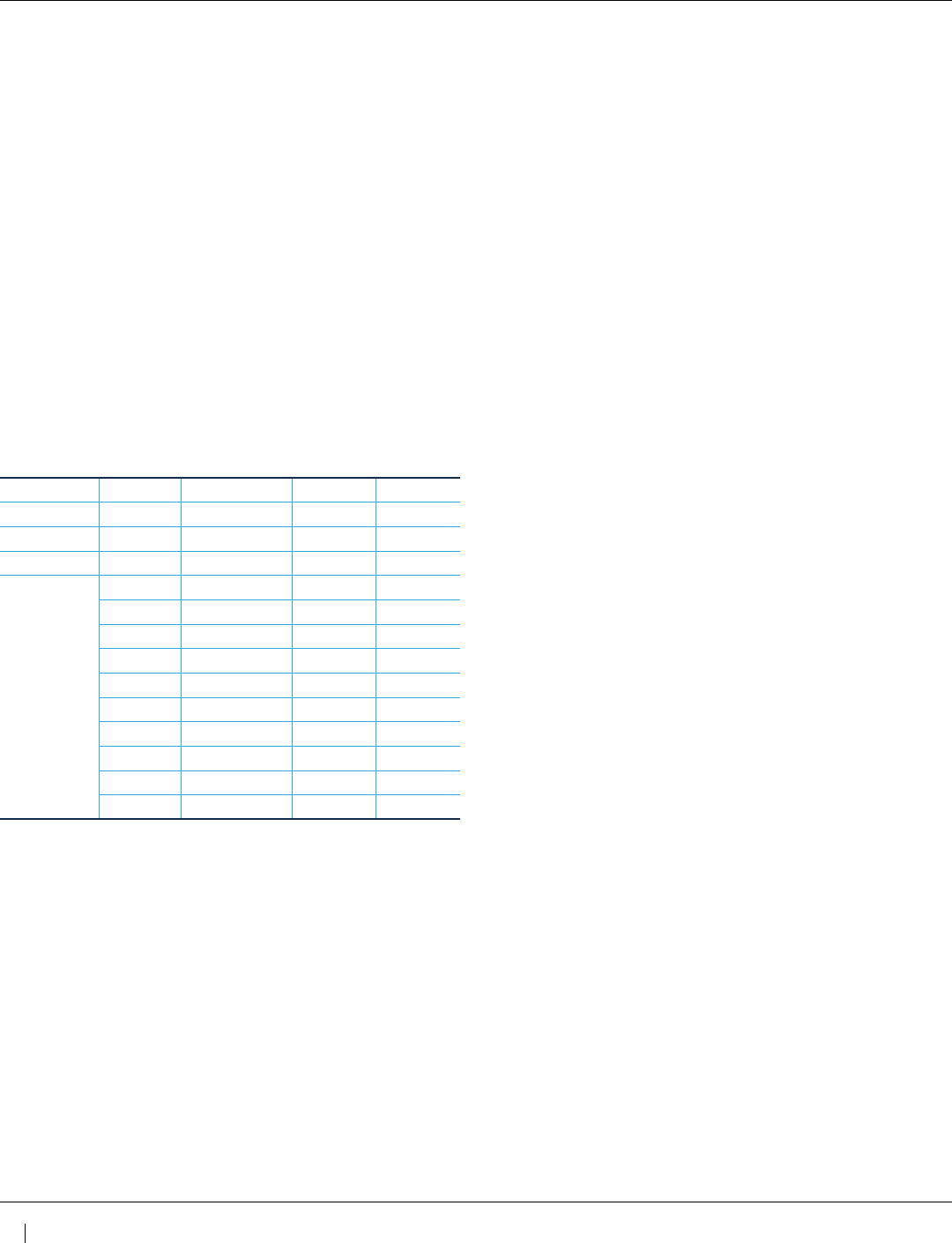
4
The most recently issued security of any tenor may be
referred to as the “new” security. Thus, the second most
recently issued security of a particular original tenor may
be referred to as the “old” security, the third most recently
issued security is the “old-old” security, the fourth most
recently issued security is the “triple old” security.
As of October 10, 2017, the most recently issued 10-year
note was identied as the 2-1/4% note maturing in August
2027; the old note was the 2-3/8% note of May 2027; the
old-old note was the 2-1/4% of February 2027; the triple
old note was the 2% of November 2026.
Beyond that, one is expected to identify the security of
interest by coupon and maturity. For example, the “2s of
‘26” refers to the note with a coupon of 2% maturing on
November 15, 2026. As of October 10, 2017, there were
not any “WI” or “when issued” 10-year notes.
10-Year Treasury Notes (As of October 10, 2017)
Coupon Maturity Price Yield
On-the-Run 2-1/4% 8/15/2027 99-01 2.36%
Old Note 2-3/8% 5/15/2027 100-05+ 2.35%
Old-Old 2-1/4% 2/15/2027 99-05+ 2.35%
Triple Old 2% 11/15/2026 97- 07+ 2.34%
1-1/2% 8/15/2026 93-14 2.32%
1-5/8% 5/15/2026 94-21+ 2.31%
1-5/8% 2/15/2026 94-29 2.30%
2-1/4% 11/15/2025 99-25 2.28%
2% 8/15/2025 98-03 2.26%
2-1/8% 5/15/2025 99-05+ 2.24%
2% 2/15/2025 98-14+ 2.23%
2-1/4% 11/15/2024 100-09+ 2.20%
2-3/8% 08/15/2024 101-07+ 2.18%
The Roll and Liquidity
Clearly, traders who frequently buy and sell are interested
in maintaining positions in the most liquid securities
possible. As such, they tend to prefer on-the-run (OTR) as
opposed to o-the-run securities.
It is intuitive that on-the-runs will oer superior liquidity
when one considers the “life-cycle” of Treasury securities.
Treasuries are auctioned, largely to broker-dealers, who
subsequently attempt to place the securities with their
customers. Often these securities are purchased by
investors who may hold the security until maturity. At some
point, securities are “put-away” in an investment portfolio
until their maturity. Or, they may become the subjects of
a strip transaction per the STRIPS (Separate Trading of
Registered Interest and Principal on Securities) program.
As these securities nd a home, supplies may become
scarce. As a result, bid/oer spreads may inate and the
security becomes somewhat illiquid. Liquidity is a valuable
commodity to many. Thus, you may notice that the price
of on-the-runs may be bid up, resulting in reduced yields,
relative to other similar maturity securities. This tends to be
most noticeable with respect to the 30-year bond.
Traders may be interested in conducting a “roll” transaction
where one sells the old security in favor of the new
security, in order to maintain a position in the on-the-run
and most liquid security. Thus, dealers will quote a bid/
oer spread in the roll, oering the opportunity to sell the
old note/buy the new note; or, buy the old note/sell the
new note, in a single transaction.
The “old note” in our table above was quoted at a yield
of 2.35% while the “new note” was seen at 2.36%. In this
case, the roll is quoted at approximately negative 1 basis
point (-0.01% = 2.35% - 2.36%).
Repo Financing
Leverage is a familiar concept to futures traders. Just as
one may margin a futures position and thereby eectively
extend one’s capital, the Treasury markets likewise permit
traders to utilize “repo” nancing agreements to leverage
Treasury holdings.
A repurchase agreement, repo or simply RP represents
a method by which one may borrow funds, typically on a
very short-term basis, collateralized by Treasury securities.
In a repo agreement, the lender will wire transfer same-
day funds to the borrower; the borrower wire transfers the
Treasury security to the lender with the provision that the
transactions are reversed at term with the borrower wiring
back the original principal plus interest.
The borrower is said to have executed a repurchase
agreement; the lender is said to have executed a reverse
repurchase agreement. Many banks and security dealers
will oer this service, once the customer applies and
passes a requisite credit check.

Understanding Treasury Futures
© 2024 CME Group. All rights reserved.
5
The key to the transaction, however, is the safety
provided the lender by virtue of the receipt of the (highly-
marketable) Treasury security. These repo transactions
are typically done on an overnight basis but may be
negotiated for terms such as one-week, two-weeks, or one
month. A third party custodian is frequently used to add an
additional layer of safety between the lender and borrower,
i.e., a tri-party repo agreement. Overnight repo rates are
typically quite low, in the vicinity of the eective federal
funds rate.
Any Treasury security may be considered “good” or
“general” collateral. Sometimes when particular Treasuries
are in short supply, dealers will announce that the security
is “on special” and oer below-market nancing rates in an
eort to attract borrowers.
Treasury Futures Delivery Practices
While some traders refer to original or “classic” Treasury
bond futures as “30-year bond futures,” that reference is
actually quite misleading. Treasury bond futures permit
the delivery in satisfaction of a maturing contract of any
U.S. Treasury security provided it matures within a range
of 15 to less than 25 years from the date of delivery. That
delivery window once reduced from 15 to 30 years and,
thus, the characterization of the Treasury bond contract as
a “30-year bond futures” was apt.
Note that the Ultra T-bond futures contract calls for the
delivery of any bond that does not mature for a period of
at least 25 years from the date of delivery. Subsequent
to the development of the Ultra bond contract, the
delivery window of the original T-bond futures contract
was amended from 15-30 years to 15-25 years. As such,
the Ultra T-bond futures contract currently is most aptly
referred to as the 30-year bond contract while the original
bond futures contract, as amended, is referred to as the
“classic” bond futures contract.
Because of the rather broadly dened delivery
specications, a signicant number of securities, ranging
widely in terms of coupon and maturity, may be eligible
for delivery. This applies with equal eect to 2-, 3-, 5-, 10-,
and Ultra 10-year Treasury note futures; as well as the
classic and Ultra T-bond futures contracts. Table 2 included
below provides a complete description of the contract
specications of CME Group Treasury futures products.
Conversion Factor Invoicing System
Securities with varying characteristics, such as coupon
and maturity, will of course be more or less valued by
the investment community. High-coupon securities, for
example, will naturally command a greater price than
comparable low-coupon securities.
These dierences must be reected in the futures contract.
In particular, when a short makes delivery of securities in
satisfaction of a maturing futures contract, the long will pay
a specied invoice price to the short.
As discussed above, the futures contract permits the delivery
of a wide range of securities at the discretion of the short.
That invoice value must be adjusted to reect the specic
pricing characteristics of the security that is tendered.
Accordingly, Treasury futures utilize a “conversion factor”
invoicing system to reect the value of the security that is
tendered by reference to the 6% futures contract standard.
The “Principal Invoice Amount” paid from long to short
upon delivery may be identied as the Futures Settlement
Price multiplied by the Conversion Factor (CF) multiplied
by $1,000.
That $1,000 constant reects the $100,000 face value
futures contract size associated with most T-note and T-bond
futures. Note that the 2-year T-note contract is based on a
$200,000 face value amount. Thus, this constant must be
reset at $2,000 for 2-year Treasury futures.
Principal Invoice Price
= Futures Settlement x Conversion Factor (CF)
x $1,000
Any interest accrued since the last semi-annual interest
payment date is added to the principal invoice amount to
equal the “total invoice amount.”
Total Invoice Amount
= Principal Invoice Amount
+ Accrued Interest
A conversion factor may be thought of as the clean price of
$1 face value of the delivered security at a yield to maturity
of 6%. Clearly, high-coupon securities will tend to have
high CFs while low-coupon securities will tend to have low
CFs. In particular, bonds or notes with coupons less than
the 6% contract standard will have CFs that are less than
1.0; bonds or notes with coupons greater than 6% have
CFs greater than 1.0.

6
E.g., the conversion factor for delivery of the 2-3/8%
T-note of Aug-24 vs. December 2017 10-year T-note
futures is 0.8072. This suggests that a 2-3/8% security
is approximately valued at 81% as much as a 6%
security. Assuming a futures price of 125-08+/32nds (or
125.265625 expressed in decimal format), the principal
invoice amount may be calculated as follows.
Principal Invoice Price
= 125.265625 x 0.8072 x $1,000
= $101,114.41
E.g., the conversion factor for delivery of the 1-7/8%
T-note of Aug-24 vs. December 10-year T-note
futures is 0.7807. This suggests that a 1-7/8% security
is approximately valued at 78% as much as a 6%
security. Assuming a futures price of 125-08+/32nds
(or 125.265625), the principal invoice amount may be
calculated as follows.
Principal Invoice Price
= 125.265625 x 0.7807 x $1,000
= $97,794.87
In order to arrive at the total invoice amount, one must of
course further add any accrued interest since the last semi
annual interest payment date to the principal
invoice amount.
Cheapest-to-Deliver
The intent of the conversion factor invoicing system is
to render equally economic the delivery of any eligible-
for-delivery securities. Theoretically, the short who has
the option of delivering any eligible security should be
indierent as to his selection.
However, the CF system is imperfect in practice as we nd
that a particular security will tend to emerge as “cheapest-
to-deliver” (CTD) after studying the relationship between
cash security prices and principal invoice amounts.
E.g., on October 10, 2017, one might have been able to
purchase the 2-3/8% of 8/24 at 101-07+ ($101,234.38
per $100,000 face value unit). The 1-7/8% of 8/24 was
valued at 98-01+ ($98,031.25 per $100,000 face value
unit). Compare these cash values to the principal invoice
amounts as follows.
2-3/8%-8/24 1-7/8%-8/24
Futures Price 125-085 125-085
x CF 0.8072 0.7807
x $1,000 $1,000 $1,000
Principal Invoice $101,114.41 $97,79 4.87
Cash Price ($101,234.38) ($98,031.25)
Delivery Gain/Loss ($119.97) ($236.38)
Our analysis suggests that a loss of $119.97 may be
associated with the delivery of the 2-3/8% of 8/24 while an
even larger loss of $236.38 might be associated with the
delivery of the 1-7/8% of 8/24. Thus, we might conclude
that the 2-3/8% of 8/24 note is cheaper or more economic
to deliver than the 1-7/8% of 8/24.
The Basis
Typically, we expect to nd a single security, or perhaps
a handful of similar securities, will emerge as CTD. This
identication has important implications for basis traders
who arbitrage cash and futures markets. A basis trader
will seek out arbitrage opportunities or situations where
they might be able to capitalize on relatively small pricing
discrepancies between cash securities and Treasury
futures by buying “cheap” and selling “rich” items.
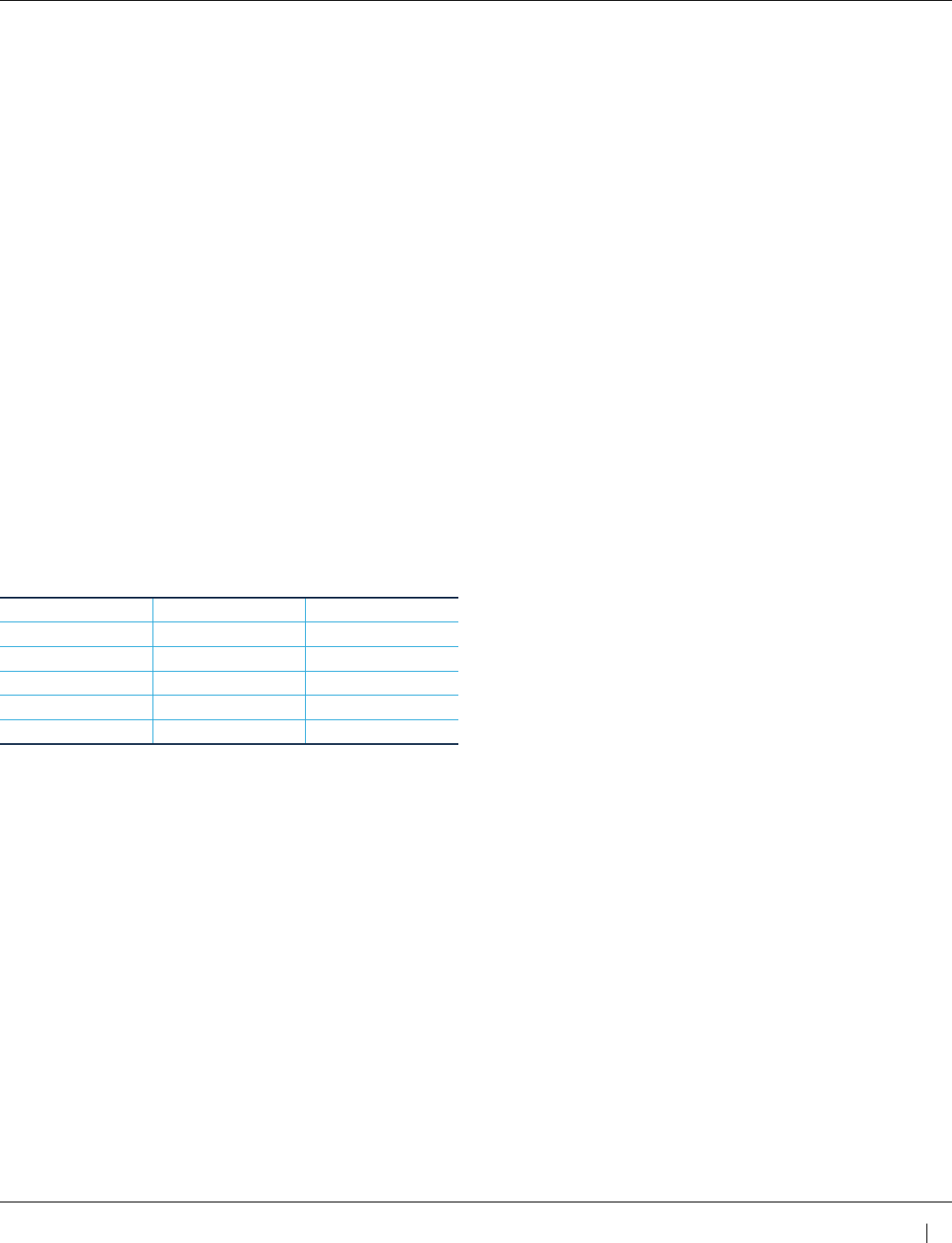
Understanding Treasury Futures
© 2024 CME Group. All rights reserved.
7
Arbitrageurs will track these relationships by studying the
“basis.” The basis describes the relationship between
cash and futures prices and may be dened as the cash
price less the “adjusted futures price” or the futures price
multiplied by the conversion factor.
Thus, the basis is analogous to the gain or loss that
might be realized upon delivery. Unlike that gain or loss,
however, the basis is typically expressed in terms of
32nds. E.g., 1-1/4 points might be shown as 40/32nds. It
is also “inverted” in the sense that we are comparing cash
less adjusted futures prices - rather than futures invoice
price less cash prices.
Basis = Cash Price-Adjusted Futures Price
Adjusted
Futures Price
= Futures Price x Conversion Factor
E.g., a comparison of cash and adjusted futures prices
provides us with a quote for the basis associated with the
2-3/8%-8/24 and 1-7/8%-8/24 Treasury securities.
2-3/8%-24 1-7/8%-24
Cash Price 101-07+ 98-01+
Futures Price 125-085 125-085
x CF 0.8072 0.7807
Adjusted Futures (101-04) (97-255)
Basis (32nds) 3.339 8.064
The basis of 3.339/32nds associated with the 2-3/8%-8/24
corresponds to a loss on delivery of $119.97 as shown
above. Similarly, the basis of 8.064/32nds associated with the
1-7/8%-8/24 corresponds to a loss on delivery of $236.38.
As suggested above, and as a general rule, the security
with the lowest basis (and highest implied repo rate),
i.e., the largest gain or smallest loss on delivery, may be
considered CTD. Clearly, the 2-3/8%-8/24 is cheaper-to-
deliver than the 1-7/8%-8/24.
Table 3 included at the end of this document depicts the
basis and implied repo rates for all eligible-for-delivery
securities vs. the December 2017 10-year T-note futures
contract as of October 10, 2017. Referring to Table 3, one
may conrm that the 2-3/8%-8/24 exhibited the lowest
basis and, therefore, may be considered the CTD security.
Note, however, that there are quite a few securities, with
similar coupons and maturities, which are near CTD. In
fact, the entire universe of eligible-for-delivery securities
features reasonably similar coupons and maturities.
It is important to identify the CTD security to the extent that
Treasury futures will tend to price or track or correlate most
closely with the CTD. This has interesting implications from
the standpoint of a “basis trader” or a hedger as discussed
in more detail below.
Suce it to say at this point that basis trading is a
frequent practice in the Treasury futures markets. Certain
terminology has been developed to identify basis positions.
One may “buy the basis” by buying cash securities and
selling futures. One may “sell the basis” by selling cash
securities and buying futures.
Basis transactions are typically transacted in a ratio that
reects the conversion factor of the security involved
in the trade.
“Buy the Basis” =
Buy cash securities
& sell futures
“Sell the Basis” =
Sell cash securities
& buy futures
E.g., if one were to buy the basis by buying $10 million
face value of the 2-3/8%-8/24 note, one might sell 81
December 2017 futures by reference to the conversion
factor of 0.8072.
E.g., if one were to sell the basis by selling $10 million
face value of the 1-7/8%-8/24 note, one might buy 78
December futures by reference to the conversion factor
of 0.7807.
By transacting the basis in a ratio identied by reference
to the CF, one may roughly balance the movement or
volatility on both legs of the spread. This is intuitive to the
extent that the conversion factor generally reects the
value of the cash position relative to that of the futures
contract. If the CF reects relative value then presumably
it will reect relative volatility or price movement as well.
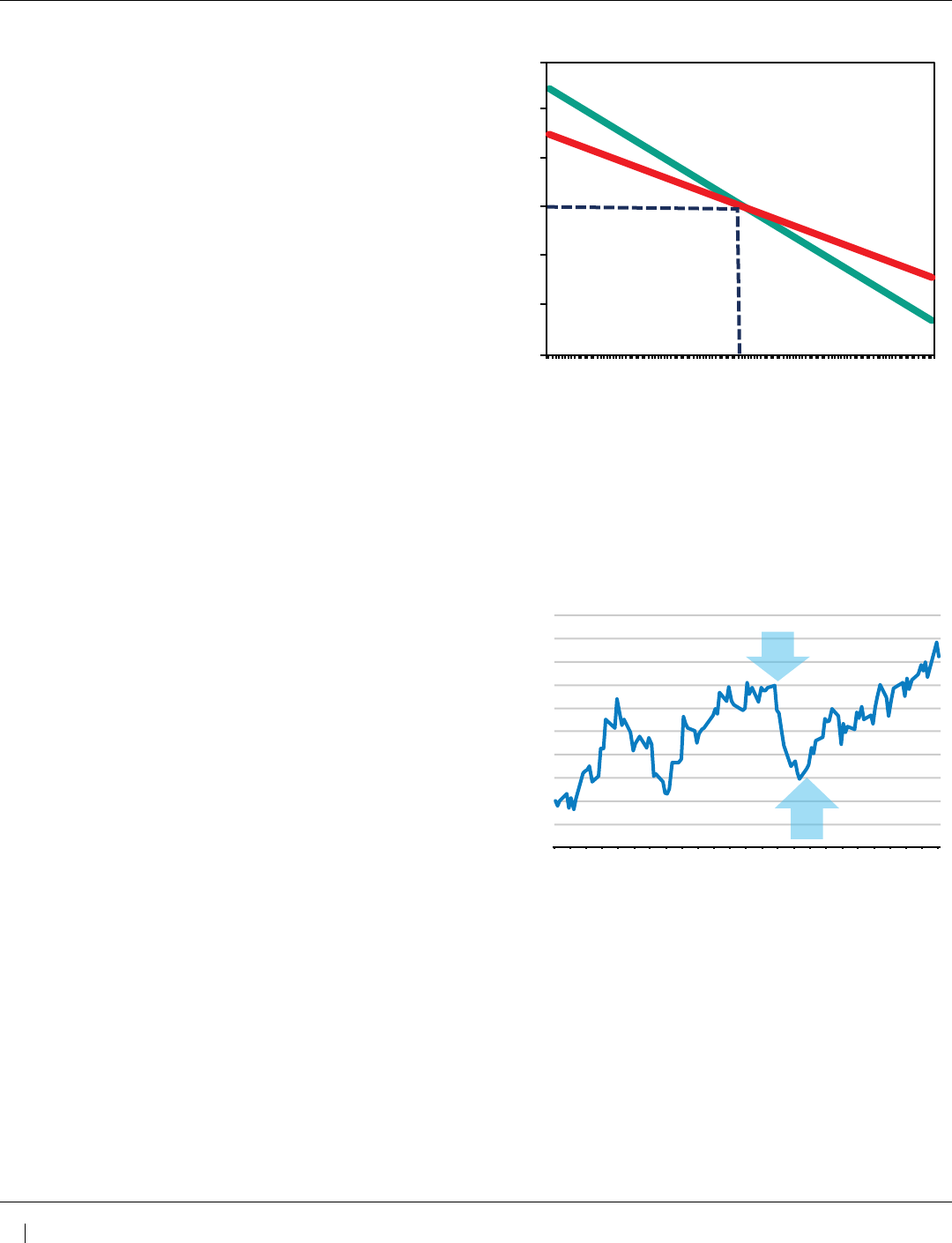
8
Why Is One Issue CTD?
If the conversion factor invoicing system performed
awlessly, all eligible-for-delivery securities would have
a similar basis and be equally economic to deliver. As
suggested above, however, a single security or several
similar securities tend to emerge as CTD.
The CF invoicing system is imperfect because it is
implicitly based on the assumption that - (1) all eligible-for-
delivery securities have the same yield; and (2) that yield
is 6%. But there are any number of “cash market biases”
that impact upon the yield of a Treasury security.
Further mathematical biases in the conversion factor
calculation will tilt the eld towards securities of particular
coupons and maturities when yields are greater than or
less than the 6% contract standard. Hence, we may further
speak of “conversion factor biases.”
Conversion Factor Effects
Perhaps more important that these cash market factors,
there are observable biases associated with the
mathematics of the conversion factor system or conversion
factor biases.
Long duration, i.e., low-coupon, long-maturity securities,
will become CTD when yields are signicantly greater
than the 6% contract standard. When yields fall below the
6% contract standard, these factors will bias towards the
delivery of short-duration, i.e., high-coupon,
short-maturity securities.
If yields > 6%
Bias to long duration
(
i.e.,
low-coupon,
long-maturity) securities
If yields < 6%
Bias to short duration
(
i.e.,
high-coupon,
short-maturity) securities
CTD Driven by Yields
100
Short
Duration
Security
Long
Duration
Security
6%
Consider the period between March and September 2017
as depicted in our graphic. During this period, the price of
the December 2017 Ten-year T-note futures experienced a
price decline in late June 2017 from approximately 126.5%
to 124.5% of par. Subsequently, the market has trended
higher to a new high of nearly 127.5% of par.
Dec-17 10-Yr Note Futures
123.0
123.5
124.0
124.5
125.0
125.5
126.0
126.5
127.0
127.5
128.0
Yields Falling
Yields Rising
3/22/17
3/29/17
4/5/17
4/12/17
4/19/17
4/26/17
5/3/17
5/10/17
5/17/17
5/24/17
5/31/17
6/7/17
6/14/17
6/21/17
6/28/17
7/5/17
7/12/17
7/19/17
7/26/17
8/2/17
8/9/17
8/16/17
8/23/17
8/30/17
9/6/17
In other words, prices dropped briey as yields spiked,
only to be followed by an extended period of prices rising
as yields fell. During the entirety of this period, prices were
well above par while yields were well below the 6% futures
contract standard. Still, conversion factor biases were
diminished or weakened as prices strengthened only to
decline once again as the market broke.
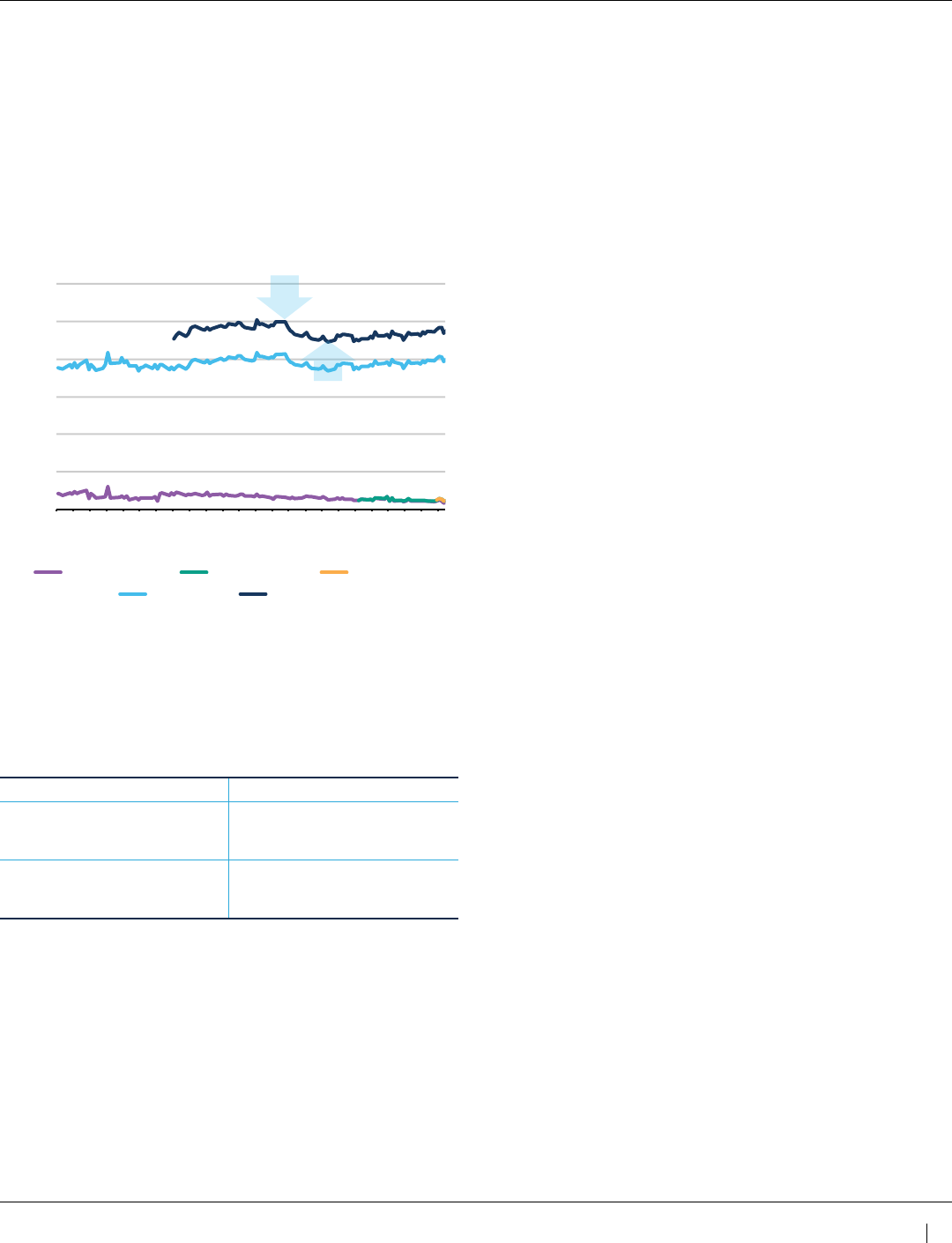
Understanding Treasury Futures
© 2024 CME Group. All rights reserved.
9
The impact of these strengthening and subsequently
weakening conversion factor biases may be observed
by examining the basis for several eligible-for-delivery
securities. Actually, the simple and graudual convergence
of cash and futures prices may be the feature that is most
apparent from an examintion of this graphic.
Dec-17 10-Yr Basis
0
2-3/8%-Aug-24 1-7/8% Aug-24
2%-Nov-26 2-3/8%-May-27
2-1/8%-Jul-24
50
100
150
200
250
300
3/22/17
3/29/17
4/5/17
4/12/17
4/19/17
4/26/17
5/3/17
5/10/17
5/17/17
5/24/17
5/31/17
6/7/17
6/14/17
6/21/17
6/28/17
7/5/17
7/12/17
7/19/17
7/26/17
8/2/17
8/9/17
8/16/17
8/23/17
8/30/17
Long Duration Basis Rising
Long Duration Basis Falling
As prices advanced and yields fell since late June, notice
that the basis was buoyed upwards to the extent that its
price rose faster than futures price which traced a shorter
duration CTD. Again, as yields fall below or further below
the 6% futures contract standard, long duration securities
tend to become less economic to deliver.
Yields Rising above 6% Yields Falling Under 6%
Sell long duration basis, i.e., sell
long duration securities & buy
futures
Buy long duration basis, i.e., buy
long duration securities & sell
futures
Buy short duration basis, i.e., buy
short duration securities & sell
futures
Sell short duration basis, i.e., sell
short duration securities & buy
futures
As prices declined and yields rose in late June, the basis
for long duration securities such as the 2%-26 or the
2-3/8%-27 tended to decline more sharply than the basis
for short duration securities such as the CTD 2-3/8%-8/24.
This is consistent with our observation above that, as
yields rise, long duration securities tend to become more
economic to deliver.
It is clear that the performance of the basis is strongly
driven by directional price movement in the Treasury
markets. Thus, “buying the basis” or “selling the basis”
may be motivated by expectations regarding rising or
falling yields. The key is to get a sense of market direction
and then identify the long or short duration securities
whose basis values will be impacted by any sizable price
(or yield) movement.
Implied Repo Rate
We often suggest that the security with the lowest basis is
cheapest-to-deliver. But to be more precise, we may point
out that the structure of coupon receipts and reinvestment
of such coupon income plays some (generally small) part
in establishing a particular security as cheapest-to-deliver
as well. Hence, traders often calculate the “implied repo
rate” (IRR) associated with eligible for delivery securities to
account for such factors.
The IRR is calculated as the annualized rate of return
associated with the purchase of a security, sale of futures
and delivery of the same in satisfaction of the maturing
futures contract. This calculation takes into account all the
cash ows associated with the security. The assumption
that the basis for any particular security may completely
converge to zero is implicit in the IRR calculation.
E.g., if one were to buy the 2-3/8%-8/24 basis by buying
the cash securities, selling futures in a ratio dictated by
the conversion factor and making delivery, or at least
witnessing full cash-futures convergence, one would lock-
in a return of 1.42%.
E.g., if one were to buy the 1-7/8%-8/24 basis by buying
cash securities and selling futures in a ratio indicated by
reference to the conversion factor and making delivery,
or at least witnessing full cash-futures convergence, one
would lock-in a rate of return of 0.32%.
Clearly, it would be preferable to lock-in a return of 1.42%
rather than a return of 0.32%. Thus, the 2-3/8%-8/24 is
cheaper to deliver relative to the 1-7/8%-8/24. In fact, if
we scan the IRRs associated with all securities eligible to
be delivered into the December 2017 contract in Table 3
below, we nd that the IRR of 1.42% associated with the
2-3/8%-8/24 is superior to all other IRRs.

10
Thus, the 2-3/8%-8/24 Treasury security is associated
with the lowest basis and the highest IRR as of October
10, 2017. As a general rule, the security with the lowest
basis will likewise exhibit the highest implied repo rate. It is
possible that a security with the lowest basis may not quite
have the highest IRR because of cash ow considerations.
But this statement is generally true. In any event, this
observation conrms the CTD status of the 2-3/8%-8/24 as
of October 10, 2017.
By buying the basis of a Treasury security, or buying
cash and selling futures, one becomes obligated to make
delivery of the Treasury in satisfaction of the maturing
futures contract.
2
Thus, buying the basis of the cheapest-
to-deliver 2-3/8%- 8/24 vs. a futures contract that matures
two or three months hence, may be considered analogous
to other short-term investment alternatives.
E.g., we might compare the IRR = 1.42% associated with
the CTD security to the prevailing 13-week T-bill yield of
1.04%; or to the eective Fed Funds rate of 1.15%; or, to a
3-month ICE LIBOR rate at 1.34%.
In this example, the IRR associated with the CTD security
was essentially equivalent to other short-term investment
opportunities. As a general rule, however, the IRR even for
the CTD security tends to run at a level that is a bit inferior
to the returns associated with comparable short-term
investment alternatives. The IRRs associated with all other
non CTD securities are even lower.
This begs the question – why would anyone ever want to
buy the basis if the returns do not appear to be competitive?
The answer lies in the fact that the basis conveys other
opportunities apart simply from the opportunity to use the
futures contract as a delivery conveyance.
Consider any discrepancy with respect to the CTD to
represent a risk premium of sorts. If one buys the CTD
security and sells futures with the intention of making
delivery, the worst case scenario has the basis converging
fully to zero and the hedger essentially locking in a return
equal to the IRR, in this case 1.42%.
But if market conditions should change such that another
security becomes CTD, this implies that the basis may
advance, or at least fail to completely converge to zero.
As a result, the trader may realize a rate of return that is in
fact greater than the currently calculated IRR.
2 One may, of course, opt to offset the short futures contract prior to the delivery
period and effectively abrogate such obligation.
Basis Optionality
In other words, there is a certain degree of “optionality”
associated with the purchase or sale of the basis. Buying
the basis is analogous to buying an option which, of
course, implies limited risk. Buying the basis implies
limited risk to the extent that, even under the worst of
circumstances, you make delivery of the security which is
eectively equivalent to the possibility that the basis fully
converges to zero.
But “crossovers” or “switch” may occur such that the basis
converges at a slower rate than otherwise anticipated or
actually advances. As a result, this short-term investment
may generate a return which is (at least theoretically)
unbounded on the upside. Limited risk accompanied by
unbounded upside potential is reminiscent of the risk/
reward prole of a long option position, thus the analogy
between a long basis position and a long option.
The best one may hope by selling the basis, or selling
securities and buying futures with the possibility of
eectively replacing the sold security by standing long in
the delivery process, is that the basis fully converges to
zero. This implies limited prot potential.
But in the event of signicant changes in market
conditions, the basis may advance sharply, exposing
the seller of the basis to (theoretically) unbounded risks.
Limited prot potential accompanied by unbounded risk
is reminiscent of the risk/reward prole of a short option
position, thus the analogy between a short basis position
and a short option.
As discussed above, the basis even for the CTD security
tends to be in excess of cost of carry considerations. This is
manifest in the fact that the IRR even for the CTD is typically
a bit below prevailing short-term rates. This premium in the
basis essentially reects the uncertainties associated with
which security may become CTD in the future.
Thus, the basis performs much akin to an option. Like any
other option, the basis will be aected by considerations
including term, volatility and strike price. The relevant
term in this case is the term remaining until the presumed
delivery date vs. the futures contract. Market volatility
aects the probability that a crossover may occur.
Rather than speak of a strike or exercise price, it is
more appropriate to assess the market’s proximity to a
“crossover point” or a price/yield at which one might expect
an alternate security to become CTD.

Understanding Treasury Futures
© 2024 CME Group. All rights reserved.
11
Consider the purchase or sale of the CTD basis. The
degree to which this basis performs like a call or a put
option is contingent upon the relationship between market
prices and the 6% futures contract standard.
If yields are below the 6% futures contract standard, the
CTD basis may be expected to advance if prices decline
(rates rise) towards 6%; or, decline if prices advance (rates
fall). Thus, buying the CTD basis when rates are below
6% is akin to the purchase of a put option. Conversely, the
sale of the CTD basis when rates are less than 6% is akin
to the sale of a put option where the value of transaction
is capped if prices should advance while losses may be
unbounded if prices should decline.
If yields are above the 6% futures contract standard, the
CTD basis may be expected to advance if prices rise
(rates fall) towards 6%; or, decline if prices fall (rates rise).
Thus, buying the CTD basis when rates are above 6%
is akin to the purchase of a call option. Conversely, the
sale of the CTD basis when rates are above 6% is akin
to the sale of a call option where the value of transaction
is capped if prices should decline while losses may be
unbounded if prices should advance.
Finally, if rates are close to the 6% futures contract standard,
the basis for what is currently CTD may be dictated by
considerations apart from conversion factor biases.
Thus, there may be signicant crossovers regardless of
whether rates rise or fall. Buying the CTD basis under
these considerations may be considered akin to the
purchase of an option straddle (i.e., the simultaneous
purchase of call and put options).
Under these circumstances the basis buyer may be
indierent between advancing or declining prices but has
an interest in seeing prices move signicantly in either
direction. Selling the CTD basis when rates are near the
6% contract standard is akin to selling a straddle (i.e., the
simultaneous sale of both call and put options). The basis
is sold under these circumstances because the trader
anticipates an essentially neutral market.
Buy CTD Basis Sell CTD Basis
Yields < 6% Buy Put Option Sell Put Option
Yields = 6% Buy Straddle Sell Straddle
Yields > 6% Buy Call Option Sell Call Option
Of course, the basis premium over carry should accrue to
the short basis trader under circumstances of continued
price stability. But the short basis trader is exposed to the
risk of dramatic price movements in either direction.
As of October 10, 2017, the IRR of the CTD 2-3/8%-
8/24 security at 1.42% fell squarely within the range of
other short-term investment alternatives. This suggests
negligible optionality, i.e., the probability of a crossover or
switch is negligible. This is driven by the fact that yields
are well below the 6% futures contract standard. Further,
the duration of the 2-3/8%-8/24, with its high coupon and
short maturity, was the shortest relative to other eligible for
delivery securities. Thus, the market assessed a negligible
probability that this security would not remain CTD by the
time we enter the December 2017 delivery period.
Measuring Risk
There are a couple of popular ways to measure the risks
associated with coupon-bearing (and money-market)
instruments including basis point value (BPV) and duration.
Basis Point Value (BPV)
BPV represents the absolute price change of a security
given a one basis point (0.01%) change in yield.
These gures may be referenced using any number of
commercially available quotation services or software
packages. BPV is normally quoted in dollars based on a
$1 million (round-lot) unit of cash securities. The following
table depicts the BPVs of various on-the-run Treasuries as
of October 30, 2017.

12
Measuring Volatility (As of October 30, 2017)
Coupon Maturity
Duration
(Yrs)
BPV
(per mil)
2-Yr Note 1-1/2% 10/31/19 1.978 $196
3-Yr Note 1-5/8% 10/15/20 2.896 $287
5-Yr Note 2% 10/31/22 4.783 $473
7-Yr Note 2-1/4% 10/31/24 6.516 $645
10-Yr Note 2-1/4% 08/15/27 8.794 $863
30-Yr Bond 2-3/4% 08/15/47 20.241 $1,946
E.g., this suggests that if the yield on the 30-year bond were to rise by a
single basis point (0.01%), the price should decline by some $1,946 per
$1 million face value unit.
Duration
If BPV measures the absolute change in the value of a
security given a yield uctuation; duration may be thought
of as a measure of relative or percentage change. The
duration (typically quoted in years) measures the expected
percentage change in the value of a security given a one-
hundred basis point (1%) change in yield.
Duration is calculated as the average weighted maturity of
all the cash ows associated with the bond, i.e., repayment
of “corpus” or face value at maturity plus coupon
payments, all discounted to their present value.
E.g., the 30-year bond is associated with duration of 20.2
years. This implies that if its yield advances by 100 basis
points (1.00%), we expect a 20.2% decline in the value of
the bond.
In years past, it was commonplace to evaluate the
volatility of coupon-bearing securities simply by reference
to maturity. But this is quite misleading. If one simply
examines the maturities of the current 2-year note and 10-
year note, one might conclude that the 10-year is 5 times
as volatile as the 2-year.
But by examining durations, we reach a far dierent
conclusion. The 10-year note (duration of 8.794 years) is
only about 4-½ times as volatile as the 2-year note (duration
of 1.978 years). The availability of cheap computing power
has made duration analysis as easy as it is illuminating.
Risk Management
Treasury futures are intended to provide risk averse xed
income investors with the opportunity to hedge or manage
the risks inherent in their investment activities. Eective
use of these contracts, however, requires a certain
grounding in hedge techniques.
Most pointedly, one may attempt to assess the relative
volatility of the cash item to be hedged relative to the
futures contract price. This relationship is often identied
as the futures “Hedge Ratio” (HR). Hedge ratios reect
the expected relative movement of cash and futures and
provide risk managers with an indication as to how many
futures to use to oset a cash exposure.
CF Weighted Hedge
Treasury futures contract specications conveniently
provide a facile means by which to assess the relative
risks associated with cash and futures. As discussed
above, the conversion factor (CF) represents the price
of a particular bond as if it were to yield 6%. Thus, the
CF reects the relative value and, by implication, the
relative volatility between cash and futures prices. Most
basis trades are in fact concluded in a ratio identied by
reference to the CF.
E.g., if one held $10 million face value of the 2-3/8%-
8/24 note, one might sell 81 December 2017 futures by
reference to the conversion factor of 0.8072 to execute a
hedge.
E.g., if one held $10 million face value of the 1-7/8%-
8/24 note, one might sell 78 December 2017 futures by
reference to the conversion factor of 0.7807 to execute a
hedge.
A conversion factor weighted hedge is likely to be quite
eective if you are hedging the cheapest-to-deliver
security. Treasury futures will tend to price or track or
correlate most closely with the CTD security.
But other securities with dierent coupons and maturities
may react to changing market conditions dierently. Thus,
one might question if you can or should do better than a
CF weighted hedge?
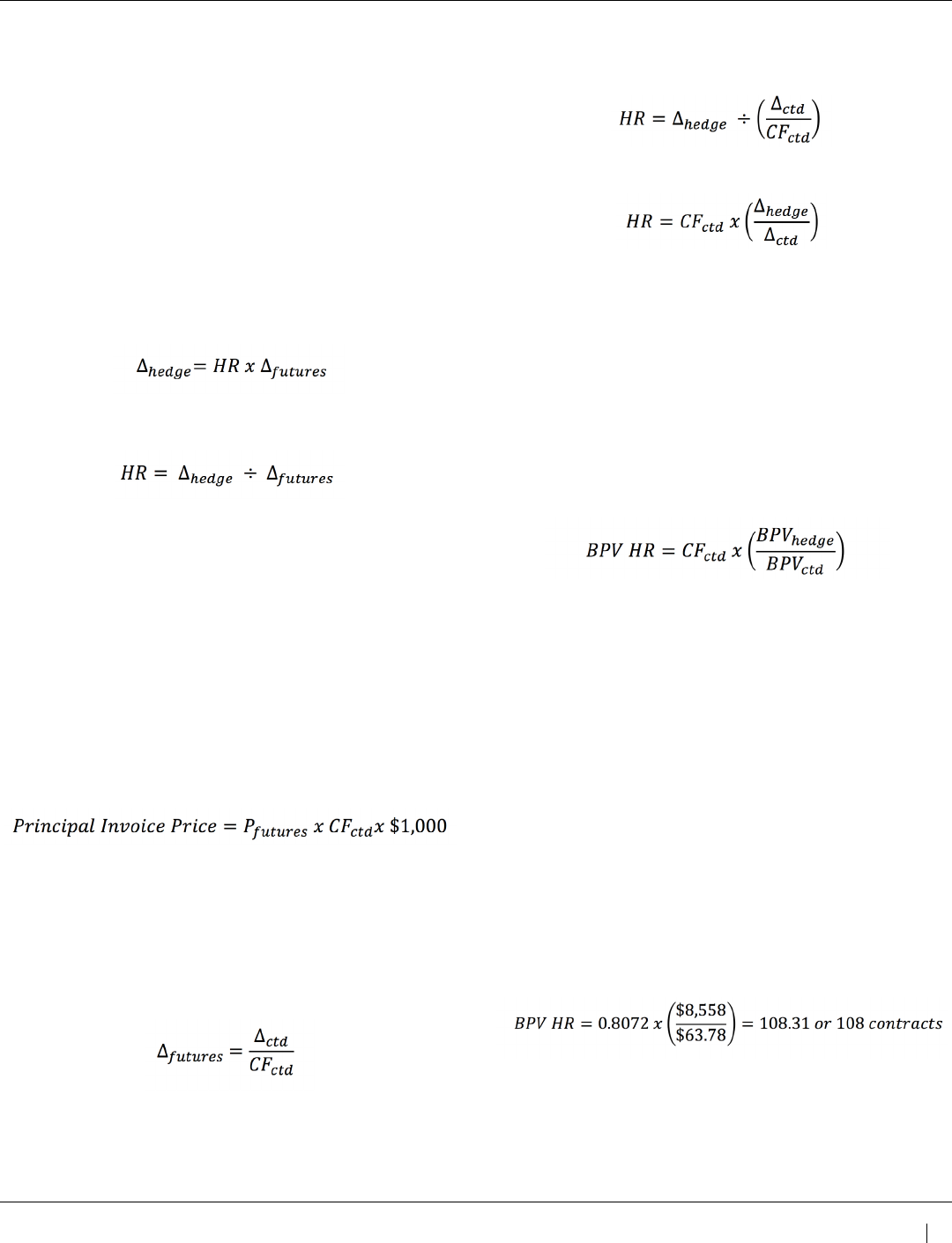
Understanding Treasury Futures
© 2024 CME Group. All rights reserved.
13
BPV Weighted Hedge
In order to understand the most eective techniques
with which to apply a hedge, consider the fundamental
objective associated with a hedge. An “ideal” hedge is
intended to balance any loss (prot) in the cash markets
with an equal and opposite prot (loss) in futures.
Our goal, therefore, is to nd a hedge ratio (HR) that
allows one to balance the change in the value of the cash
instrument to be hedged (∆hedge) with any change in the
value of the futures contract (∆futures). Note that we use
the Greek letter delta or ∆ to denote the abstract concept
of change in value.
We solve for the hedge ratio (HR) as follows.
Because we have not dened what we mean by “change
in value,” the equation above is of an abstract nature and
cannot be directly applied. Thus, let’s backtrack to discuss
the relationship between Treasury futures and cash prices.
Per our discussion above, principal invoice amount paid
from long to short upon deliver will be equal to the futures
price multiplied by the conversion factor of the cash
security being delivered. Rational shorts will, of course,
elect to tender the cheapest-to-deliver security. Thus,
we might designate the futures price and the conversion
factor of the cheapest-to-deliver as Pfutures and CFctd,
respectively.
Because the basis of the CTD is generally closest to
zero, relative to all other eligible securities, we might
assume that the futures price level and, by implication,
any changes in the futures price level (∆futures) will be a
reection of any changes in the value of the CTD (∆ctd)
adjusted by its conversion factor (CFctd) as follows.
Substituting this quantity into our equation specied above,
we arrive at the following formula.
We might further rearrange the equation as follows.
Unfortunately, this concept of “change in value” remains
abstract. Let us “operationalize” the concept by substituting
the basis point value of the hedged security (BPVhedge)
and the basis point value of the cheapest-to-deliver
(BPVctd) for that abstract concept.
Recall from our discussion above that a basis point value
represents the expected change in the value of a security,
expressed in dollars per $1 million face value, given a one
basis point (0.01%) change in yield. Thus, we identify the
basis point value hedge ratio (or “BPV HR”) as follows.
Our analysis implicitly assumes that any changes in the
yield of the hedged security and that of the cheapest-
to-deliver security will be identical. I.e., that we will
experience “parallel” shifts in the yield curve. This
analysis further presumes that you are able to identify
the cheapest-to-deliver security and that it will remain
cheapest-to-deliver. The latter assumption is, of course,
questionable in a dynamic market.
E.g., let us nd the basis point value hedge ratio (HR)
required to hedge $10 million face value of the 2-3/8%-
5/27 note security. This security carried a BPV = $8,558
per $10 million. The CTD security was the 2-3/8%-8/24
with a BPV = $63.78 per $100,000 face value and a
conversion factor of 0.8072 vs. December 2017 Ten-year
T-note futures. The hedge ratio may be identied as 108
contracts per $10 million face value of the 2-3/8%-5/27.
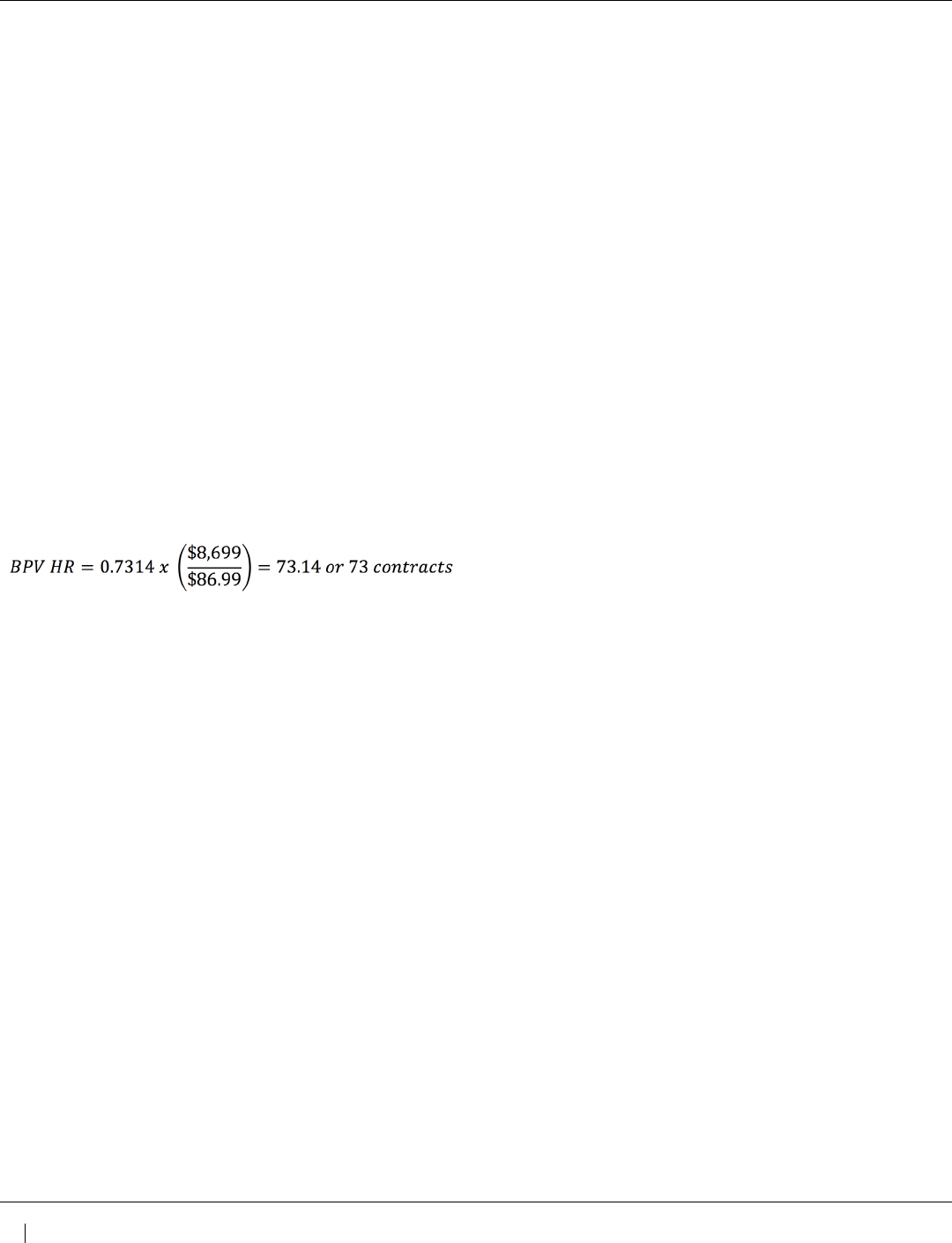
14
Note that the HR = 108 is signicantly greater than the 75
contracts suggested by reference to the conversion factor
(0.7455) of the 2-3/8%-5/27 security.This is due to the fact
that the CTD security carries a relatively short duration of
6.437 years compared to the duration associated with the
hedged security of 8.662 years.
It is no coincidence that the ratio of durations is roughly
equal to the ratio between the BPV and CF hedge ratios
or (6.437 ÷ 8.662) ~ (75 ÷ 108). I.e., the futures contract is
pricing or tracking or correlating most closely with a shorter
duration security. Consequently, futures prices will react
rather mildly to uctuating yields. Therefore, one requires
more futures to enact an eective hedge.
E.g., what would our hedge ratio be if the CTD security
was the on-the-run 2-1/4%-8/27 with a rather longer
duration of 8.958 years? This security has a BPV of
$86.99 per $100,000 face value and a conversion factor
for delivery vs. December 2017 Ten-year T-note futures of
0.7314. Our analysis suggests that one might hedge with
73 contracts per $10 million face value of 2-1/4%-8/27.
Note that this hedge ratio of 73 contracts is signicantly
less than the 108 contracts suggested by our analysis
above and reasonably similar to the 75 contracts
suggested by the CF hedge ratio. This can be explained
by the fact that the 2-1/4%-8/27 has pricing characteristics
that are quite similar to 2-3/8%-5/27 security which is the
subject of the hedge. In particular, the 2-1/4%-8/27 had a
duration of 8.958 years which is reasonably close to the
8.662 duration of the 2-3/8%-5/27. Because of the similar
risk characteristics of the CTD and hedged security, the
CF may do a reasonable job of identifying an appropriate
hedge ratio.
Crossover Risks
This further suggests that, if there is a crossover in the
CTD from a short duration security to a longer duration
security, the number of futures needed to hedge against
the risk of declining prices is decreased. This may be a
favorable circumstance for the hedger who is long cash
Treasuries and short futures in a ratio prescribed by the
BPV technique.
Consider that as prices decline and longer duration
securities become CTD, one is essentially over-hedged in
a declining market. If on the other hand, prices advance
and even shorter duration securities become CTD, the
appropriate hedge ratio will tend to increase. Thus, the
long hedger becomes under-hedged in a rising market.
Another way of saying this is that there is a certain degree
of “convexity” inherent in the relationship that favors the
long hedger or long basis trader (long cash and short
futures). Conversely, this convexity tends to work to the
disadvantage of the short hedger or short basis trader
(short cash and long futures).
Once again, we may liken the basis to an option to the
extent that option premiums are also aected by convexity.
Further, because the long basis trader eectively owns
the option, he pays an implicit premium in the dierence
between prevailing short-term yields and the return on the
basis trade as might be simulated in the absence of any
CTD crossovers.
The short basis trader is eectively short an option and
receives this implicit premium. This implicit premium is
reected in a comparison of the Implied Rate of Return
(IRR) relative to prevailing short-term rates.
Note that the BPV of a debt security is dynamic and
subject to change given uctuating yields. As a general
rule, BPV declines as a function of maturity; and, as yields
increase (decrease), BPVs decline (advance). This implies
that the hedge ratio is likewise dynamic. Over a limited
period of time, however, HRs may be reasonably stable,
provided there is no crossover in the cheapest-to-deliver.
As a general rule in practice, it would be commonplace for
hedgers to re-valuate and readjust the hedge if rates were
to move by perhaps
20-25 basis points.
Portfolio Hedging
Thus far, our discussion has centered about comparisons
between a single security and a Treasury futures contract,
a “micro” hedge if you will. But it is far more commonplace
for an investor to become concerned about the value of
a portfolio of securities rather than focus on a single item
within a presumably diversied set of holdings.

Understanding Treasury Futures
© 2024 CME Group. All rights reserved.
15
How might one address the risks associated with a
portfolio of securities, i.e., how to execute a “macro”
hedge? The same principles apply whether hedging a
single security or a portfolio of securities. Thus, we need
to evaluate the risk characteristics of the portfolio in terms
of its BPV and duration just as we would examine an
individual security. Then we may simply apply the BPV
hedge ratio for these purposes.
E.g., assume that you held a $100 million xed income
portfolio with a BPV = $80,000 and a duration of 8 years.
This duration is similar to the duration associated with
securities deliverable against the 10-year T-note futures
contract, suggesting use of the 10-year as a hedge
vehicle. As of October 10, 2017, the CTD security was the
2-3/8%-8/24 with a BPV = $63.78 per $100,000 face value
unit and a CF = 0.8072. Our analysis suggests that one
might sell 1012 futures to hedge the portfolio.
Thus far, our examples illustrated situations where we
had eectively hedged individual securities or portfolios in
their entirety. In the process, we might eectively push the
risk exposure down to near $0 as measured by BPV or 0
years as measured by duration. But it would actually be
uncommon to see an asset manager adjust an actual xed
income risk exposure all the way down to zero.
Asset managers generally measure their performance by
reference to a designated “benchmark” or “bogey.” The
benchmark is often identied as an index of xed income
securities such as the Barclays U.S. Aggregate Bond
Index or some other commonly available measure.
The returns on this benchmark may be identied as the
“core” or “beta” returns associated with the portfolio.
In addition, the asset manager may exercise some
limited degree of latitude in an attempt to outperform the
benchmark, or to capture some excess return known as
“alpha” in current investment parlance.
Asset managers may be authorized to adjust the duration
of the portfolio upwards by a limited amount in anticipation
of rate declines and price advances. Or, to adjust duration
downwards by a limited amount in anticipation of rate
advances and price declines. The following formula
provides the appropriate hedge ratio for these operations.
Where Dtarget is the target duration; Dcurrent is the
current duration.
E.g., let’s return to our example of a $100 million xed
income portfolio. Assume that the portfolio duration of 8
years was designed to coordinate with the duration of the
designated benchmark. Thus, the portfolio manager may
be authorized to adjust portfolio duration between 6 and
10 years in pursuit of “alpha.” The asset manager is now
concerned about the prospects for rate advances and
wishes downwardly to adjust duration from 8 to 6 years.
Our analysis suggests that this may be accomplished by
selling 253 futures.
The application of this formula provides asset managers
with a great deal of exibility to adjust the portfolio
duration – either upward or downward – to meet the
demands of the moment.
Bullets and Barbells
Typically, one looks to hedge a Treasury portfolio with the
use of Treasury futures which correspond most closely in
terms of duration to the average weighted portfolio duration.
E.g., if one held a portfolio with an average weighted
duration of 4 years, it would be natural to look to 5-year
Treasury note futures as a suitable risk layo vehicle. If
the portfolio had an average weighted duration of 8 years,
it would be natural to look to either 10-year Treasury note
futures or the recently launched Ultra 10-year Treasury
note futures, which tracks one of the three most recently
auctioned 10-year notes.
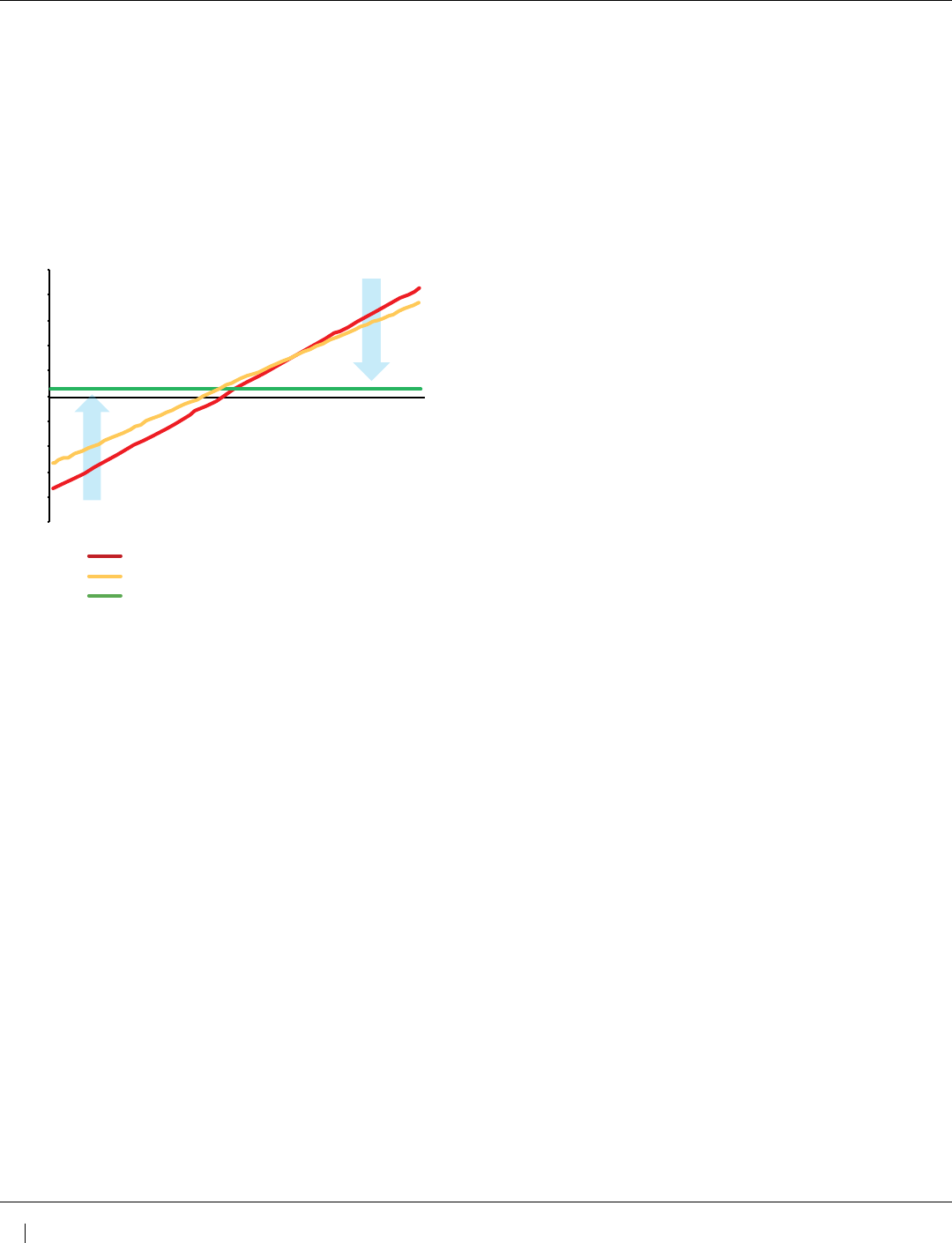
16
This analysis would tend to work well when the portfolio
is constructed predominantly of securities which were
close in terms of their durations to the average portfolio
duration. Certainly, if the entire portfolio were populated
with a variety of recently issued 5-year T-notes, it would
behoove the hedger to utilize 5-year Treasury note futures
as a hedge, minimizing basis risk and the need for any
subsequent hedge management.
Hedged with Short Futures
Return
Market Prices
Prices Decline &
Yields Advance
Prices Advance &
Yields Decline
Fixed Income Portfolio
Fully Hedged
Partially Hedged
A portfolio constructed in such a manner might be
labeled a “bullet” portfolio to the extent that it contains
reasonably homogeneous securities in terms of maturity
and presumably coupon. Under these circumstances, one
might simply “stack” the entire hedge in a single Treasury
futures contract which most closely conforms to the
duration of the portfolio constituents.
Of course, one may attempt to introduce a certain
speculative element into the hedge by using longer- or
shorter-term futures contracts as the focus of the hedge.
If the yield curve were expected to steepen, a hedge using longer-
term futures, e.g., 10- or 30-year Treasury futures rather than
5-year futures, would allow one to capitalize on movement in the
curve beyond simply immunizing the portfolio from risk. If the yield
curve is expected to atten or invert, a hedge using shorter-term
futures, e.g., 2-year or 3-year Treasury futures rather than 5-year
futures, could likewise provide yield enhancement.
But a portfolio need not necessarily be constructed per the
“bullet” approach. Consider a portfolio with a duration of
4 years that is constructed using a combination of 2- and
10-year notes and no 5-year notes whatsoever.
A portfolio constructed in such a manner may be labeled a
“barbell” portfolio to the extent that it is “weighted” with two
extreme duration securities with no intermediate duration
securities at all. If one were to simply stack the hedge
into 5-year Treasury note futures, the investor becomes
exposed to the risk that the shape of the yield curve
becomes distorted such that 5-year yields sag below yields
in the 2- and 10-year sectors of the curve.
The holder of a barbell portfolio might instead attempt to
utilize a combination of various tenured Treasury futures
which is weighted with an eye to the proportion of the
portfolio devoted to each sector of the yield curve. As
such, the hedger may insulate from the risks that the
shape of the yield curve will shift.
Thus, an asset manager might categorize his holdings into
various sectors of the curve corresponding to available
Treasury futures “buckets,” i.e., 2-, 5-, 10- and 30-year
securities. Then, the asset manager may calculate the
BPV HRs applicable to each of those bucketed portfolios
and essentially hedge each element separately.
If, however, the investor wished to introduce a speculative
element into the hedge, the use of longer- or shorter-
maturity Treasuries driven by an expectation of a
steepening or attening yield curve, respectively, may be in
order.
Comparing Returns of Cash to
Futures & Repo
Investors are frequently faced with the choice of allocating
funds to Treasury futures or notes. Based upon a similar
analysis for an earlier period, we compared returns
of investing in CTD Treasury notes to earning income
by investing proceeds from the sale of the CTD notes
at overnight repo rates and establishing long 10-year
Treasury futures (Globex: ZN, Bloomberg: TY) positions.
In our analysis, we assumed that investors either:
• Maintained long positions in Treasury notes that were
CTD for the 10-year Treasury note futures or
• Sold those CTD notes and invested proceeds from
the sale at overnight rates, which were compounded
for each applicable holding period, and purchased the
equivalent long position via Treasury note futures.
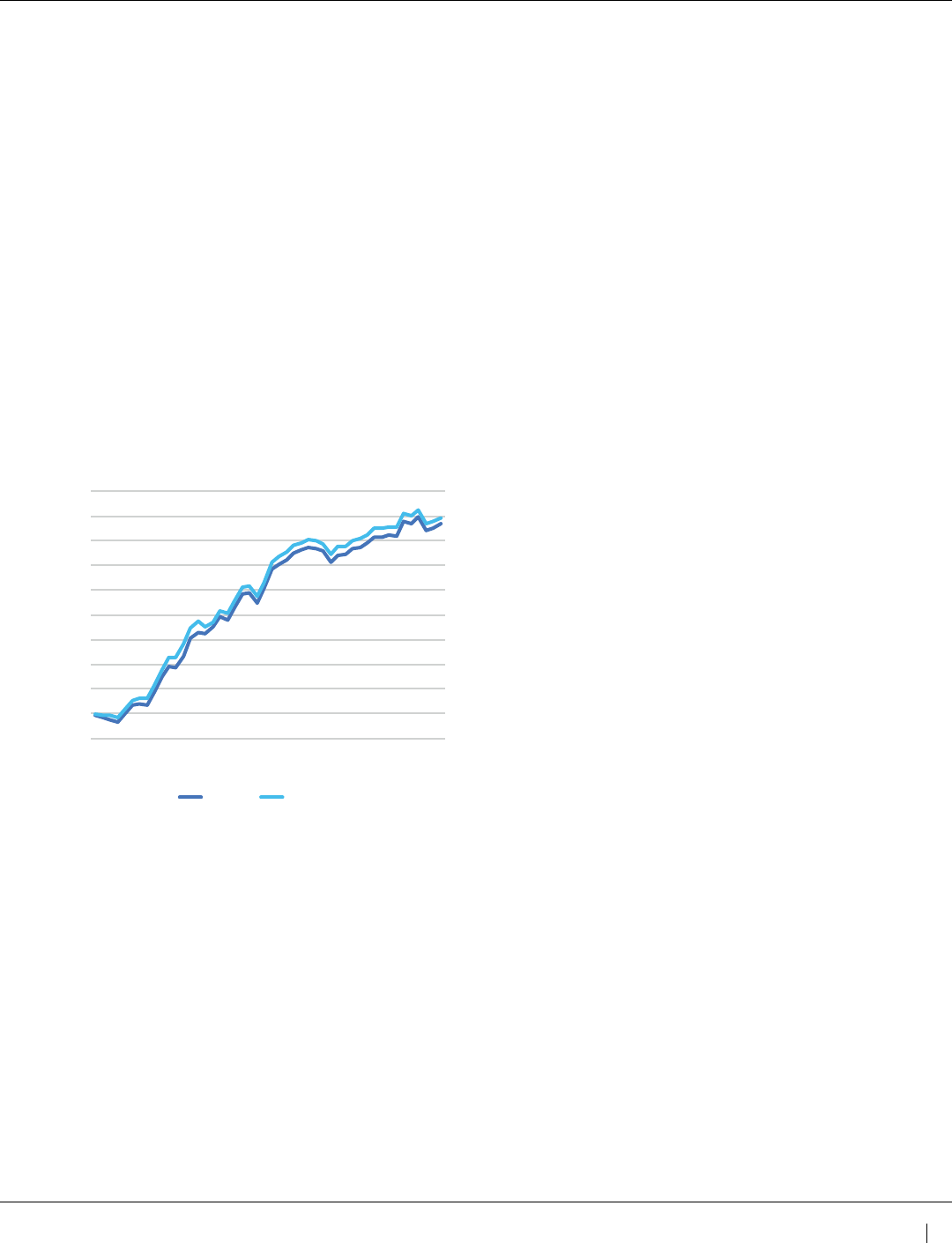
Understanding Treasury Futures
© 2024 CME Group. All rights reserved.
17
We examined quarterly returns of the long CTD Treasury
notes position and the long Treasury futures and repo
positions from the September 2005 contract month through
the June 2017 contract month, 48 quarters. We determined
that the combined 10-year Treasury futures and repo
positions produced average annual returns of 4.85%,
compared to 4.71% for CTD Treasury notes. As a result, the
futures and repo positions produced average annual returns
14 basis points higher than the CTD note positions.
The chart below depicts returns for the CTD notes
(dark blue line) and futures + repo positions (light blue line)
compounded quarterly for the 12-year period.
Comparing Returns of CTD Treasury Notes (CTD)
to 10-Year Futures and Repo (TYF)
Compounded Quarterly-September 2005 through
June 2017 Contracts
98
100
102
104
106
108
110
112
114
116
118
TYU2005
TYH2006
TYU2006
TYH2007
TYU2007
TYH2008
TYU2008
TYH2009
TYU2009
TYH2010
TYU2010
TYH2011
TYU2011
TYH2012
TYU2012
TYH2013
TYU2013
TYH2014
TYU2014
TYH2015
TYU2015
TYH2016
TYU2016
TYH2017
CTD TYF
Base Value=100
(Compounded Quarterly Sep 05-Jun 17)
The similar but superior returns of the long Treasury
futures and repo positions compared to CTD Treasury
note positions demonstrate that Treasury futures produced
nearly identical investment income over an extended
period of 12-years as the CTD notes, which the futures
are tracking. Despite not being a direct source of coupon
income, Treasury futures price movements are passed to
position holder daily via variation settlement and reect the
accrued coupon and price changes of the CTD Treasury
notes over time.
Treasury futures provide a means to similar returns
with access to broad and deep pools of liquidity that are
comparable, if not superior, to the OTR cash notes and
bonds, which are generally considered the most liquid in
the cash markets (by extension, more liquid than CTD
notes). For a recent comparison of Treasury futures and
OTR notes and bonds, please refer to The New Treasury
Market Paradigm, published by CME Group in June 2016.
Additionally, Treasury futures oer many operational
eciencies such as o-balance sheet exposure,
concentration of positions in a single line item, netting,
transparency, and initial margins that reect one-day
period of risk.
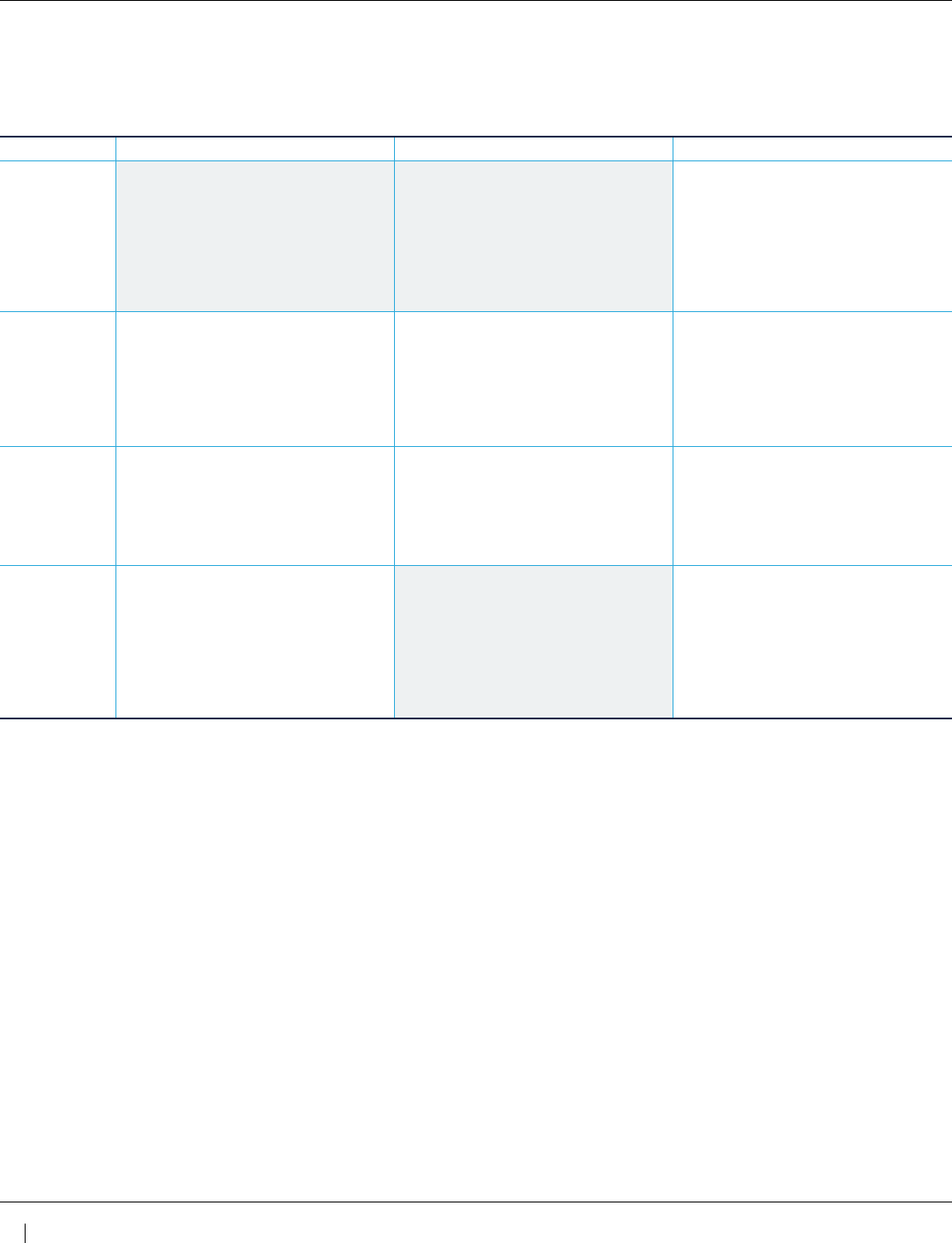
18
Table 1: The Delivery Timetable for Treasury Futures*
(All times refer to Chicago time.)
Short Clearing Firm CME Clearing Long Clearing Firm
First Position
Day
By 8:00 pm, two business days prior to
the rst day allowed for deliveries into
an expiring futures contract (ie, rst day
of delivery month), clearing rms report
to CME Clearing all open long positions,
grouped by account origin (customer or
house) and position vintage date.
Day 1:
Intention Day
By 6:00 pm, the short clearing rm
noties CME Clearing that it intends to
make delivery on an expiring contract.
Once CME Clearing has matched the
short clearing rm to the long clearing
rm(s) for delivery, this declaration
cannot be reversed.
At 8:00 pm, CME Clearing matches
the delivering short clearing rm to the
clearing rm(s) with long positions having
the oldest vintage date(s), and then
informs the short (long) party that the
opposite party will take (make) delivery.
By 8:00 pm, clearing rms report to CME
Clearing all open long positions in the
expiring futures contract, grouped by
account origin (customer or house) and
position vintage date.
Day 2:
Notice Day
By 2:00 pm (3:00 pm on Last Notice Day),
using calculations based on the expiring
contract’s Intention Day settlement price,
the short clearing rm must conrm
invoice details with CME Clearing.
At 4:00 pm, CME Clearing runs invoices
and provides them to long clearing rm(s)
matched to take delivery from the short
clearing rm making delivery.
By 4:00 pm, the long clearing rm
assigned to take delivery provides the
name and location of its bank to the short
clearing rm making delivery.
Day 3:
Delivery Day
Short and long clearing rms have until
9:30 am to resolve invoice differences. By
10:00 am, the short clearing rm deposits
Treasury securities for delivery into its
bank account, and it instructs its bank to
transfer the securities, via Fed wire, to the
long clearing rm’s account no later than
1:00 pm.
By 7:30 am, the long clearing rm makes
funds available, and noties its bank to
remit the funds upon accepting Treasury
securities. By 1:00 pm, the long clearing
rm’s bank has accepted the Treasury
securities and has remitted the invoice
amount via Fed wire to the short clearing
rm’s bank account.
* Operational details are subject to change, insofar as CME Clearing periodically reviews the physical delivery process and, when necessary, modies it to enhance its
efciency. For current information, please consult CBOT Rules.
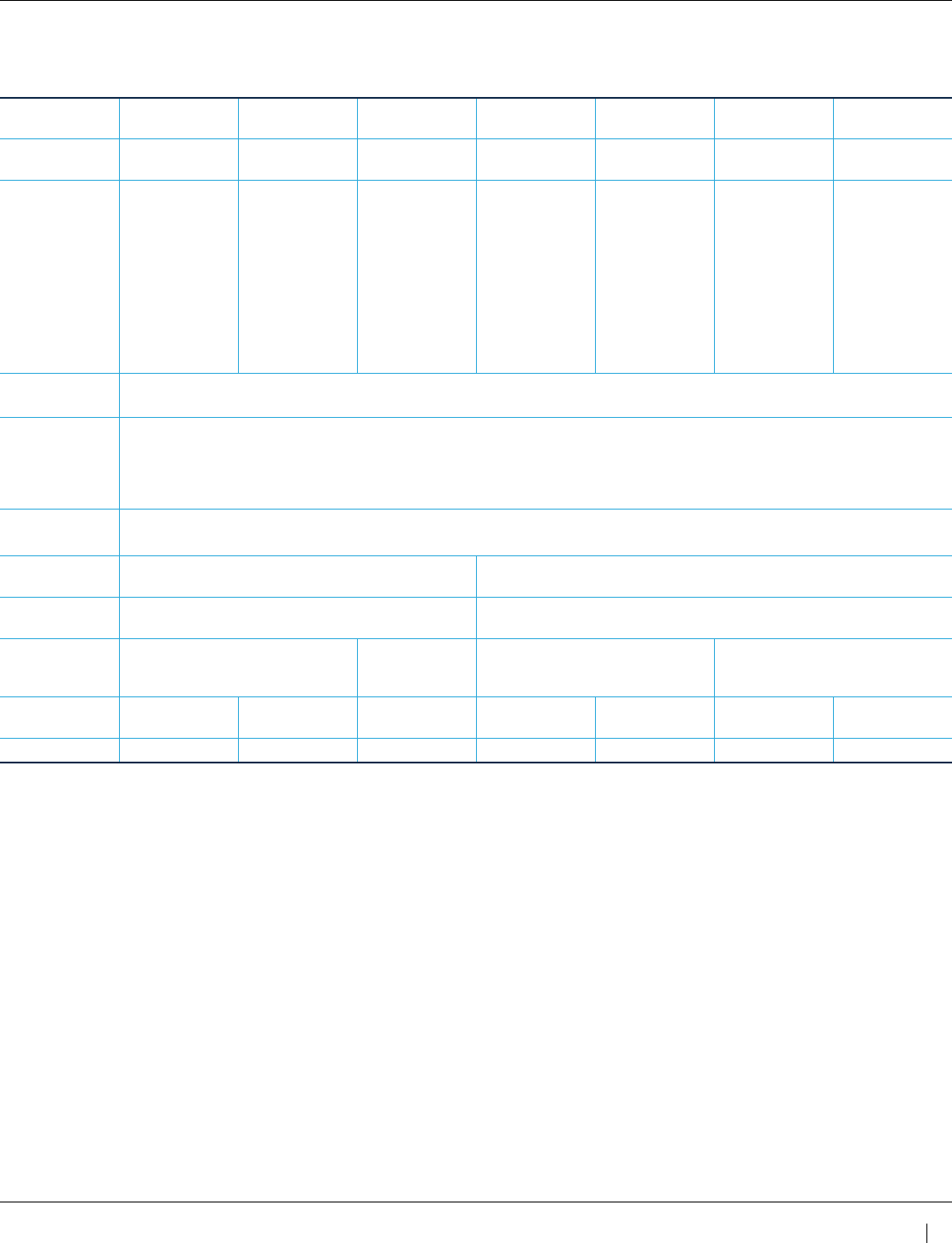
Understanding Treasury Futures
© 2024 CME Group. All rights reserved.
19
Table 2: Treasury Futures Contracts Summary
2-Year T-Note 3-Year T-Note 5-Year T-Note 10-Year T-Note
Ultra 10-Year
T-Note Classic T-Bond Ultra T-Bond
Contract Size
($ Face Value)
200,000 200,000 100,000 100,000 100,000 100,000 100,000
Deliverable
Grade
Treasury notes.
Original term
to maturity: not
more than 5
years 3 months.
Remaining term
to maturity: at
least 1 year 9
months and not
more than 2
years.
Treasury notes.
Original term
to maturity:
not more
than 7 years.
Remaining term
to maturity: at
least 2 years
9 months and
not more than 3
years.
Treasury notes.
Original term
to maturity: not
more than 5
years 3 months.
Remaining term
to maturity: at
least 4 years 2
months.
Remaining term
to maturity of
at least 6 years
6 months, but
less than eight
years.
Treasury notes.
Remaining term
to maturity: at
least 9 years 5
months and not
more than 10
years.
Treasury bonds.
Remaining term
to maturity: at
least 15 years
and less than 25
years.
Treasury bonds.
Remaining term
to maturity: at
least 25 years.
Delivery Months The rst three consecutive contracts in the March, June, September, and December quarterly cycle.
Delivery Method Physical delivery of contract grade US Treasury securities via the Federal Reserve book-entry wire-transfer system. Delivery
invoice price equals the futures contract settlement price, times the size of the futures contract price point, times a conversion
factor, plus accrued interest from the delivered security’s last coupon payment date to the futures contract delivery date. The
conversion factor, computed and published by the Exchange, represents the price of $1 face value of the delivered security to
yield 6 percent per annum as of the rst day of the futures contract delivery month.
Trading Hours CME Globex: 5:00 pm - 4:00 pm, Chicago time, Sunday – Friday
Trading in an expiring contract ceases at 12:01 pm, Chicago time, on the contract’s last trading day.
Last Trading
Day
Last business day of the delivery month Seventh business day preceding the last business day of the delivery
month
Last Delivery
Day
Third business day following the Last Trading Day Last business day of the delivery month
Price Quote Points ($2,000) and eighths of 1/32
of a point.
Points ($1,000)
and quarters of
1/32 of a point.
Points ($1,000) and halves of 1/32
of a point.
Points ($1,000) and 1/32 of a point.
CME Globex
Ticker Symbol
ZT Z3N ZF ZN TN ZB UB
Clearing Code 26 3YR 25 21 TN 17 UBE
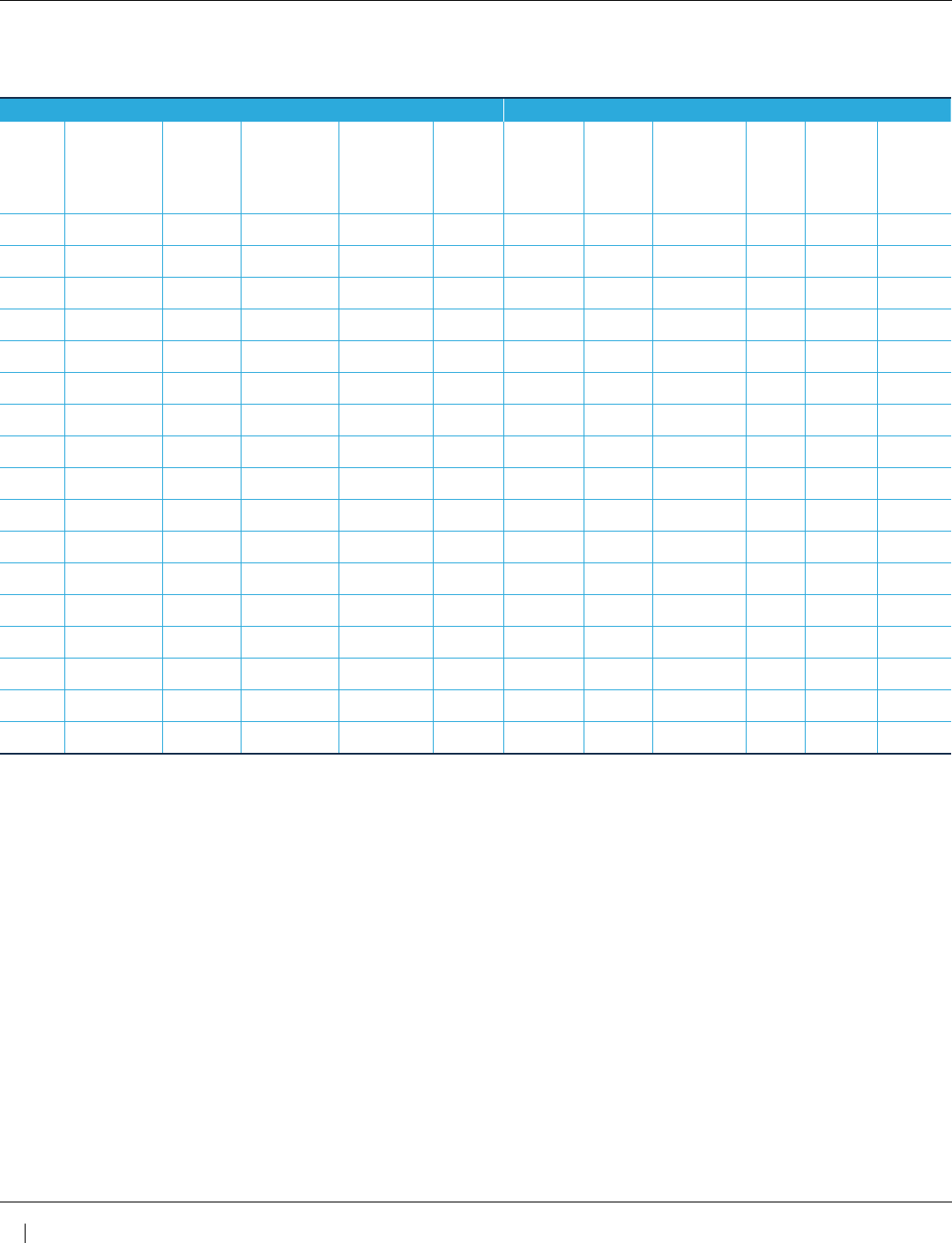
20
Table 3: December 2017 Ten-Year T-Note Futures Basis (As of October 10, 2017)
Securities Cheapest to Deliver Analysis
Coupon Maturity Mid CUSIP Issue
Delivery
Years
Clean
Cash
Price
Basis
Net of
Carry
Treasury
Conver-
sion Factor
(TCF) Yield
Futures
DV01
(Cash
DV01/
TCF)
Implied
Repo
Rate
2.375 8/15/2024 101.2266 912828D56 8/15/2014 6.67 101.2266 - 0.1185 0.8072 2.18% $76.51 1.42%
2.125 7/31/2024 99.6758 9128282N9 7/31/2017 6.58 99.6758 0.1633 0.7939 2.17% $76.56 0.68%
1.875 8/31/2024 98.0508 9128282U3 8/31/2017 6.67 98.0508 0.2718 0.7807 2.18% $78.02 0.32%
2 6/30/2024 98.9336 912828XX3 6/30/2017 6.5 98.9336 0.358 0.7873 2.17% $75.87 0.18%
2.25 11/15/2024 100.3008 912828G38 11/17/2014 6.92 100.3008 1.2816 0.7943 2.20% $79.37 -1.76%
2.125 9/30/2024 99.6016 9128282Y5 10/2/2017 6.75 99.6016 1.6159 0.7875 2.19% $78.28 -2.60%
2 2/15/2025 98.4531 912828J27 2/17/2015 7.17 98.4531 2.6975 0.7741 2.23% $82.58 - 5.15%
2.125 5/15/2025 99.1719 912828XB1 5/15/2015 7. 42 99.1719 3.9209 0.7748 2.24% $84.79 -7. 81%
2 8/15/2025 98.0938 912828K74 8/17/2015 7.67 98.0938 5.2038 0.7612 2.26% $ 87.70 -10.91%
2.25 11/15/2025 99.7813 912828M56 11/16/2015 7.92 99.7813 6.2525 0.7702 2.28% $89.57 -12.93%
1.625 2/15/2026 94.9063 912828P46 2/16/2016 8.17 94.9063 7. 9198 0.7252 2.30% $94.07 -17.91%
1.625 5/15/2026 94.6641 912828R36 5/16/2016 8.42 94.6641 9.0921 0.7185 2.31% $96.60 -20.69%
1.5 8/15/2026 93.4414 9128282A7 8/15/2016 8.67 93.4414 10.3718 0.7038 2.32% $99.69 -24.15%
2 11/15/2026 97. 2 3 05 912828U24 11/15/2016 8.92 97. 23 0 5 11.0751 0.7307 2.34% $100.38 -24.51%
2.25 2/15/2027 99.1641 912828V98 2/15/2017 9.17 99.1641 12.058 0.7421 2.35% $101.93 -26.19%
2.375 5/15/2027 100.168 912828X88 5/15/2017 9.42 100.168 13.147 0.7455 2.35% $103.77 -28.23%
2.25 8/15/2027 99.0391 9128282R0 8/15/2017 9.67 99.0391 14.4821 0.7314 2.36% $106.67 -31.73%
NOTES:
December 2017 futures were priced at 125-085 (125-8.5/32nds)
Securities highlighted in red represent least economic-to-deliver; highlighted in green represent most economic-to-deliver.
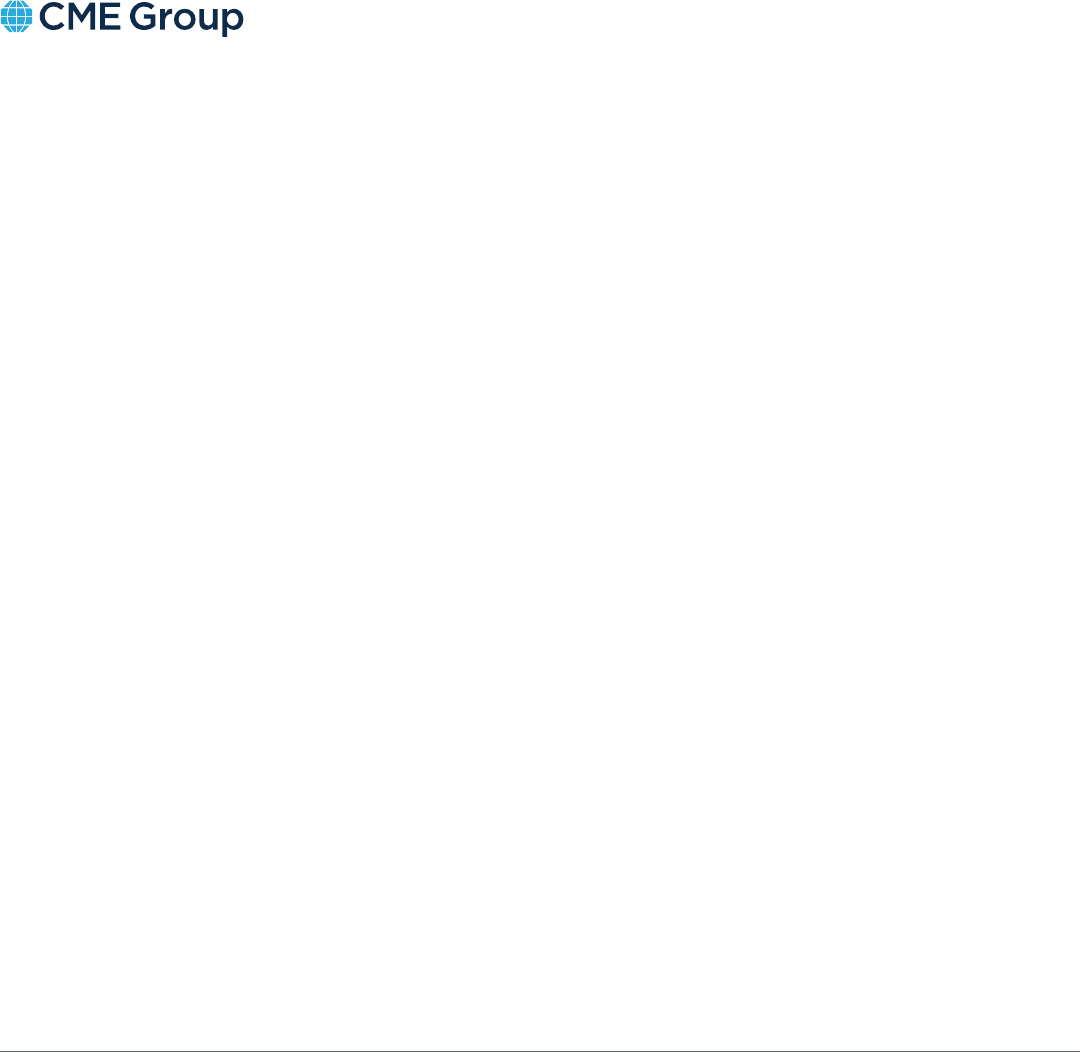
cmegroup.com
Data sources: Bloomberg, CME Group unless otherwise noted.
Neither futures trading nor swaps trading are suitable for all investors, and each involves the risk of loss. Swaps trading should only be undertaken by investors who are Eligible Contract
Participants (ECPs) within the meaning of Section 1a(18) of the Commodity Exchange Act. Futures and swaps each are leveraged investments and, because only a percentage of a contract’s value
is required to trade, it is possible to lose more than the amount of money deposited for either a futures or swaps position. Therefore, traders should only use funds that they can afford to lose
without affecting their lifestyles and only a portion of those funds should be devoted to any one trade because traders cannot expect to profit on every trade. All references to options refer to
options on futures.
Any research views expressed those of the individual author and do not necessarily represent the views of the CME Group or its affiliates. The information within this presentation has been
compiled by CME Group for general purposes only. CME Group assumes no responsibility for any errors or omissions. All examples are hypothetical situations, used for explanation purposes only,
and should not be considered investment advice or the results of actual market experience.
All matters pertaining to rules and specifications herein are made subject to and are superseded by official rulebook of the organizations. Current rules should be consulted in all cases concerning
contract specifications.
CME Group is a trademark of CME Group Inc. The Globe Logo, CME, Globex and Chicago Mercantile Exchange are trademarks of Chicago Mercantile Exchange Inc. CBOT and the Chicago Board
of Trade are trademarks of the Board of Trade of the City of Chicago, Inc. NYMEX, New York Mercantile Exchange and ClearPort are registered trademarks of New York Mercantile Exchange, Inc.
COMEX is a trademark of Commodity Exchange, Inc. All other trademarks are the property of their respective owners.
Copyright © 2024 CME Group. All rights reserved. PM2276/0224
